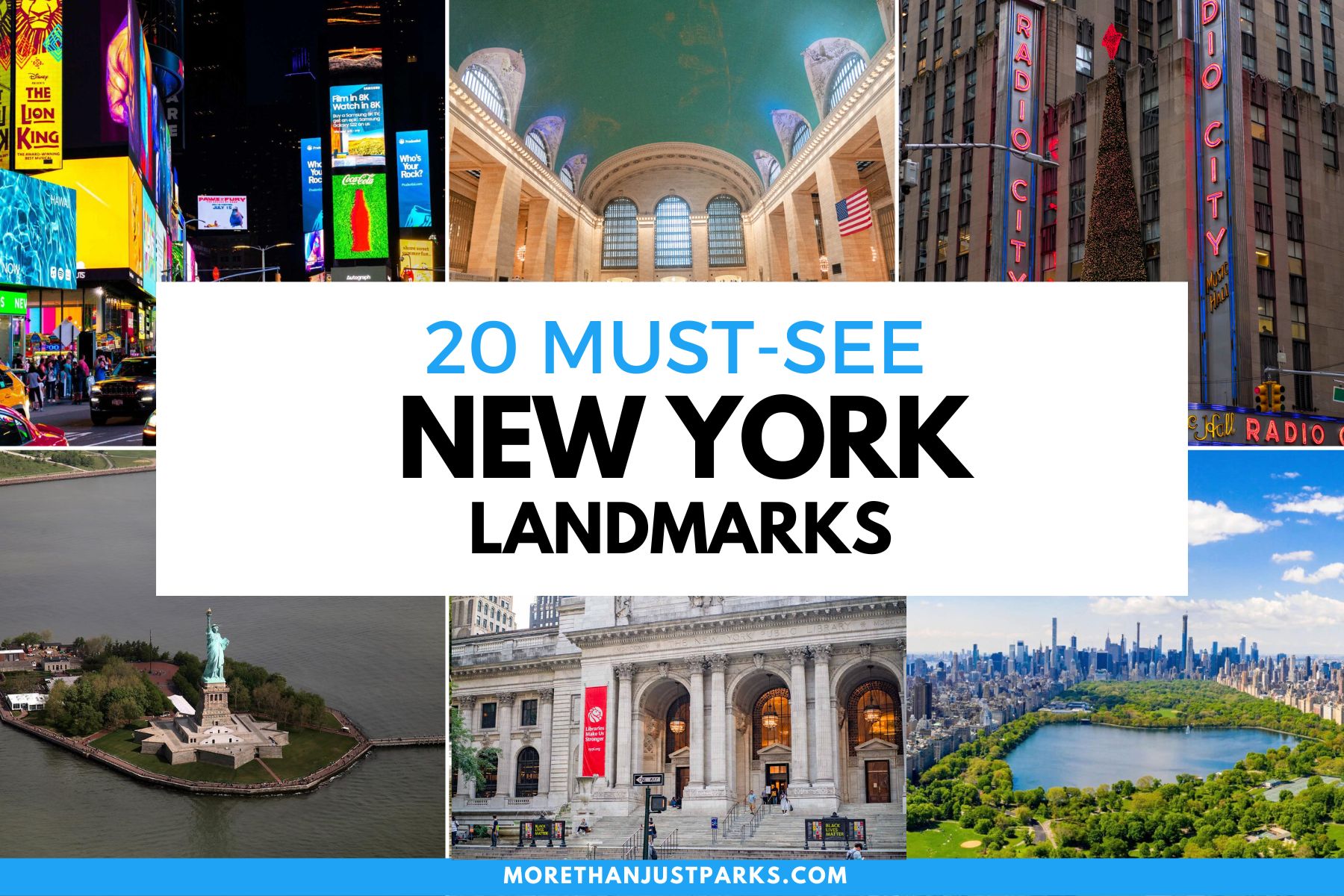
Article Summary: New York Landmarks
New York Landmarks. More Than Just Parks has 20 incredible must-see sites for you to visit.
There’s so much more to this exciting place than the Empire State Building and Yankee Stadium. In this article, we’ll familiarize you with the incredible landmarks located in New York State.
We’ve got incredible places, iconic memorials, fascinating museums, epic monuments and so much more.
We’re going to give you our list of the Top 20 Landmarks In New York.
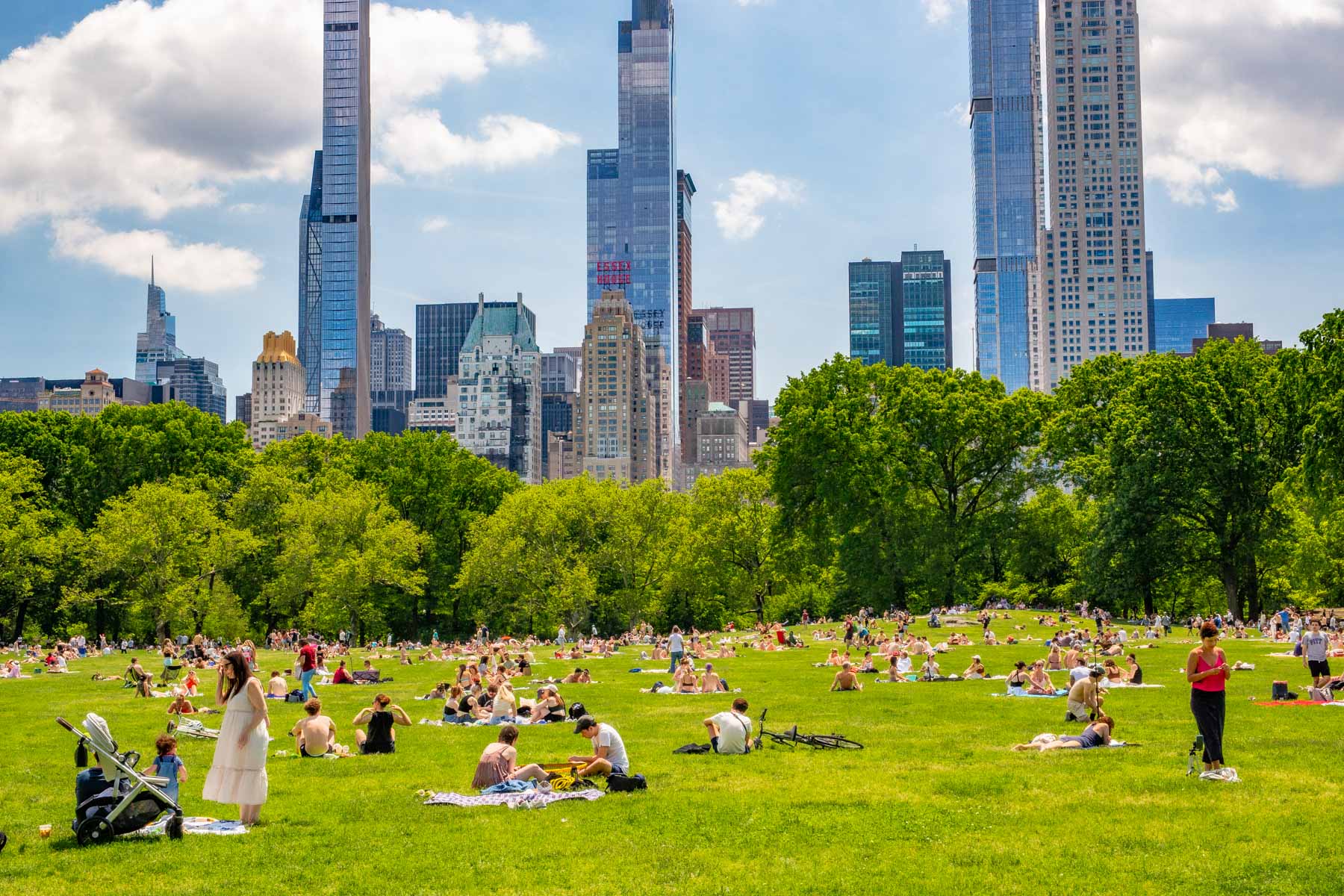
So, What Is A Landmark?
Well, it’s a place of “a special character or special historical or aesthetic interest or value as part of the development, heritage, or cultural characteristics of a city, state, or nation.”
Why visit these places? Because landmarks connect us to the past. Through visiting these wonderful places where history occurred we find our roots. It allows us to feel like we are a part of something much bigger than ourselves.
And, speaking of history, did I mention that I taught the subject? I spent a lifetime teaching about the history behind many of these amazing sites. Then I got to see them firsthand. And now I’m sharing the fascinating stories of these places with you. It doesn’t get any better than that!
So, without further ado, let’s dive in.
New York Landmarks
Table Of Contents
Some Fascinating Facts About New York
Here are some fascinating facts about the city of New York:
- New York City is the most populous city in the United States, with an estimated population of over 8.3 million people as of 2021.
- New York City is home to the largest stock exchange in the world, the New York Stock Exchange, where more than $21 trillion in securities are traded annually.
- New York City is made up of five boroughs: Manhattan, Brooklyn, Queens, the Bronx, and Staten Island. Manhattan is the most densely populated borough, while Staten Island is the least populated.
- The Statue of Liberty, one of the most iconic symbols of the United States, stands on Liberty Island in New York Harbor. It was a gift from France to the United States in 1886 and stands at 305 feet tall.
- The Empire State Building is a famous skyscraper in New York City that stands at 1,454 feet tall. It was completed in 1931 and was the tallest building in the world until 1971.
- Central Park, located in the heart of Manhattan, is one of the largest urban parks in the world, spanning 843 acres. It was designed by Frederick Law Olmsted and Calvert Vaux and opened in 1858.
- New York City is known as the cultural capital of the world, with numerous museums, theaters, and galleries. Some of the most famous museums in New York City include the Metropolitan Museum of Art, the American Museum of Natural History, and the Museum of Modern Art.
- The first pizzeria in the United States, Lombardi’s, opened in New York City in 1905. Today, New York-style pizza is known for its thin, crispy crust and generous toppings.
- New York City is home to some of the world’s most famous landmarks, including the Brooklyn Bridge, the Chrysler Building, and the One World Trade Center.
- New York City is often referred to as “The City That Never Sleeps” because of its bustling 24-hour culture, with restaurants, bars, and entertainment venues open all night long.
Top 20 New York Landmarks
We’re Excited To Share Our List Of The Top 20 New York Landmarks With YOU
People of every nationality live in New York. In fact, more than 600 languages are spoken in New York, making it one of the most linguistically diverse cities in the world. The city’s diversity can be witnessed in its food, art, music, culture, and neighborhoods.
More Than Just Parks is excited to share with you our list of the Top 20 Landmarks In New York. These are some incredible sites that definitely belong on your bucket list.
We’re kicking off our list of the Best New York Landmarks at #20 with Niagara Falls State Park.

20. Niagara Falls State Park
Niagara Falls is a majestic natural wonder located on the Niagara River, which flows from Lake Erie to Lake Ontario along the border between the United States and Canada. The history of Niagara Falls is a rich and fascinating one that spans thousands of years.
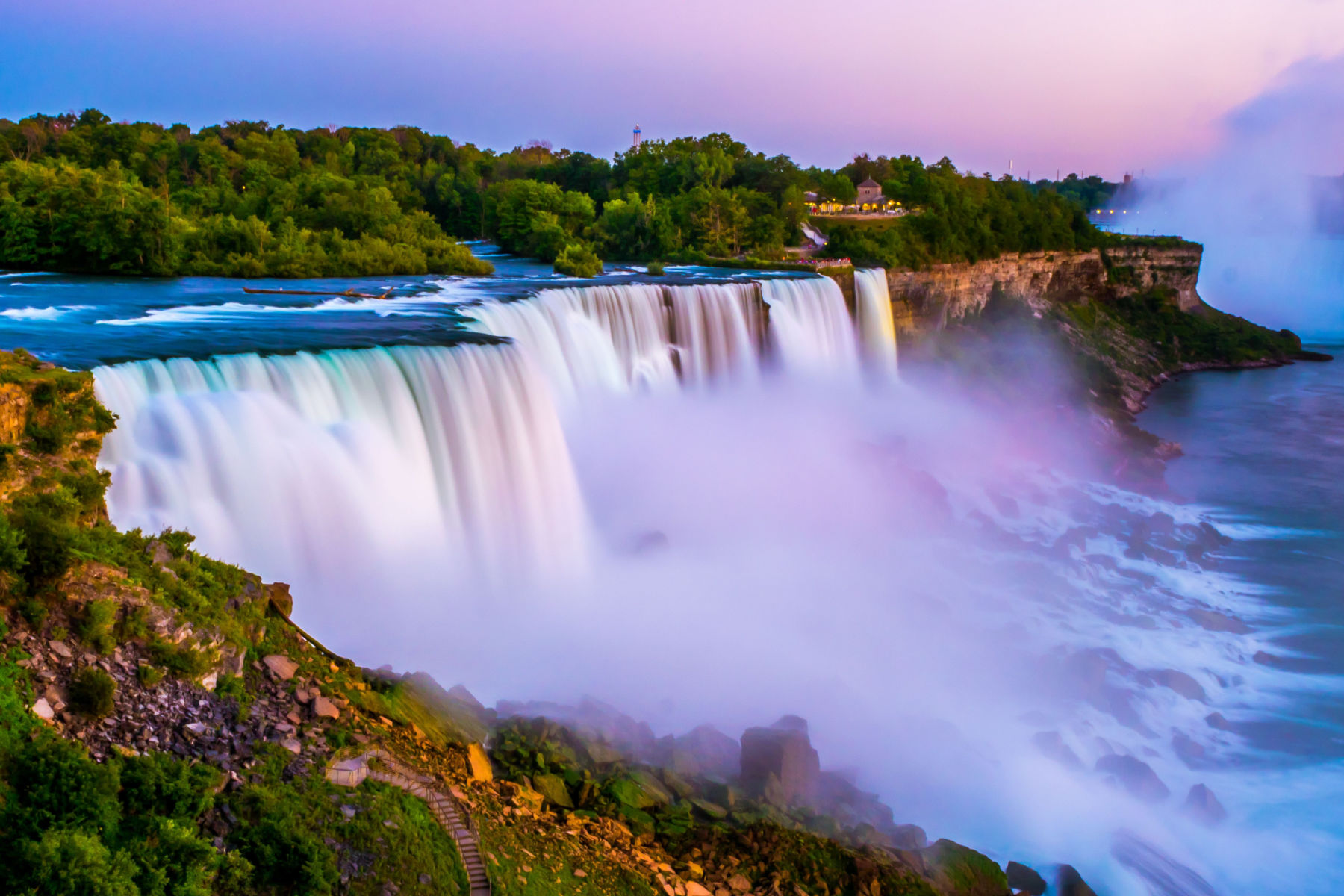
A Short History Of Niagara Falls
The earliest known human inhabitants of the Niagara region were the indigenous peoples of the Iroquois Confederacy, who have lived in the area for over 10,000 years. They believed that the falls were the home of powerful spirits and that they possessed healing powers.
The first recorded European to visit Niagara Falls was French explorer Samuel de Champlain in 1604. However, it wasn’t until the mid-18th century that the falls became a popular tourist attraction, drawing visitors from across North America and Europe.
In the early 19th century, the Niagara Falls area became an important industrial center, with factories and mills springing up along the river to take advantage of its powerful waterfalls. This industrialization brought jobs and economic growth to the region but also led to pollution and environmental degradation.
The Niagara Falls State Park was established in 1885, making it the oldest state park in the United States. The park was created to protect the falls and the surrounding natural area from further development and destruction.
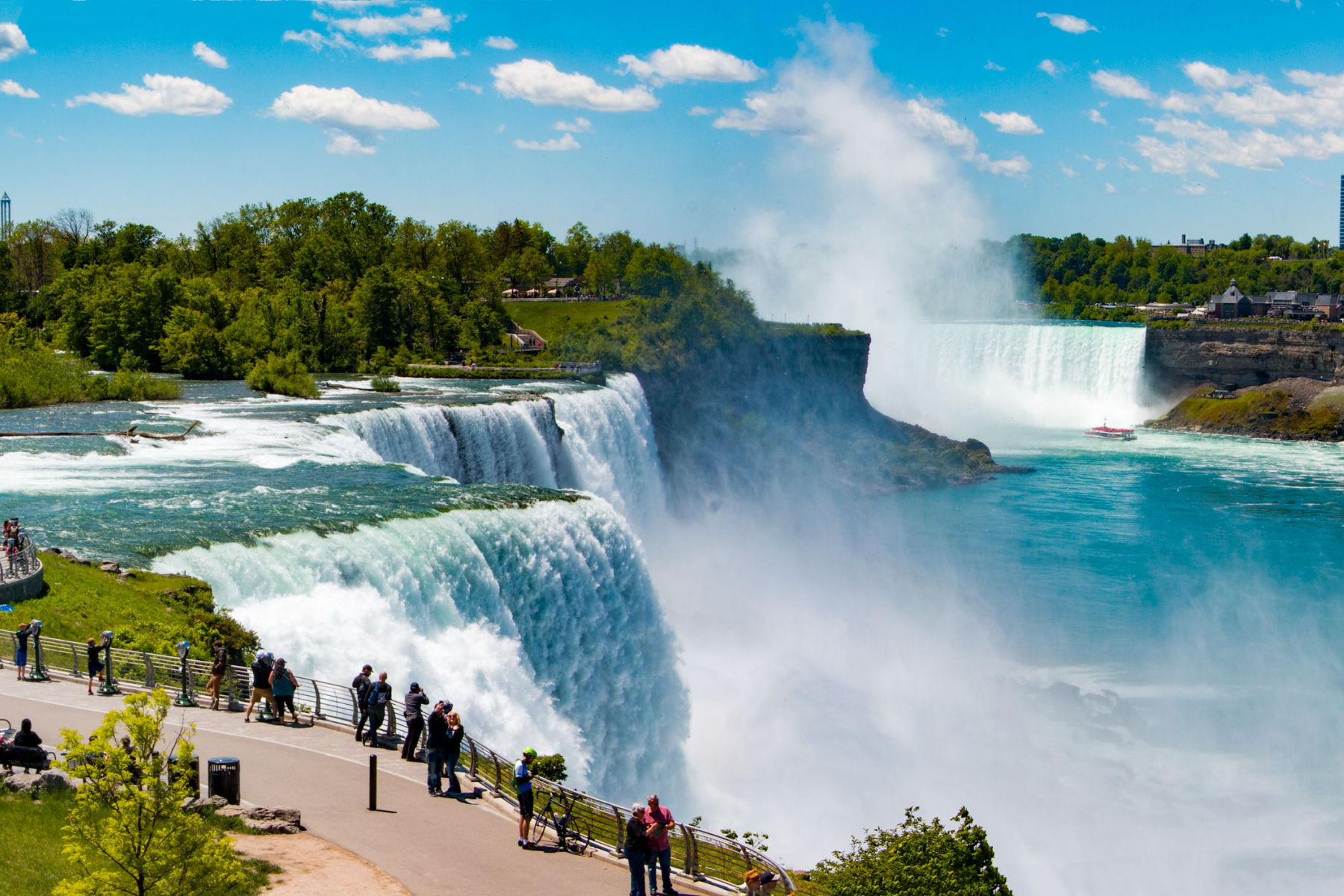
Believe It Or Not, People Have Actually Attempted To Go Over The Falls
Here is a brief history of some of the most notable attempts:
- Annie Edson Taylor: In 1901, Annie Edson Taylor became the first person to go over Niagara Falls in a barrel. She designed and built the barrel herself, and survived the fall with only a few cuts and bruises.
- Bobby Leach: In 1911, Bobby Leach became the second person to go over Niagara Falls in a barrel. He suffered a broken jaw and two broken kneecaps, but survived the fall.
- Charles Stephens: In 1920, Charles Stephens went over the falls in a barrel, but was killed when the barrel broke apart on impact.
- Jean Lussier: In 1951, Jean Lussier went over the falls in a specially designed rubber ball. He survived the fall and later went on to design other safety devices for thrill seekers.
- Roger Woodward: In 1960, seven-year-old Roger Woodward accidentally went over the falls after his boat capsized. He survived the fall with only minor injuries, thanks to a life jacket and a nearby tourist boat that rescued him.
- Karel Soucek: In 1984, Karel Soucek went over the falls in a barrel as a publicity stunt. He survived the fall, but was killed later that year while attempting a similar stunt in the Houston Astrodome.
- Kirk Jones: In 2003, Kirk Jones went over the falls with no protection. He survived the fall, but suffered numerous injuries and later died in 2017 in a different stunt attempt.

Photograph of Annie Edson Taylor, the first person who’d survived a trip over Niagara Falls in a barrel on 24 October 1901 | Courtesy of Wikimedia Commons
Niagara Falls In The 20th Century
In the 20th century, efforts were made to harness the power of the Niagara River for hydroelectric power generation. In 1950, the Niagara Power Project was completed, providing electricity to the surrounding region and beyond.
Today, Niagara Falls continues to be a popular tourist destination, with millions of visitors coming each year to witness the awe-inspiring power and beauty of the falls.
The area has also become a center for environmental conservation and sustainable tourism, ensuring that future generations can enjoy this natural wonder for years to come.
Things To Do
Here are some of the top activities:
- View the Falls: The main attraction of the park is, of course, the Niagara Falls themselves. There are several ways to view them, including from various overlooks and observation points throughout the park.
- Maid of the Mist Boat Tour: Take a boat ride on the Maid of the Mist, which takes you up close to the falls, giving you an incredible view and experience of the power of the water.
- Cave of the Winds: Take the elevator down to the base of the falls and walk along a series of wooden walkways to get up close and personal with the falls.
- Niagara Gorge Trail: Hike along the Niagara Gorge Trail, which offers stunning views of the river and the falls from a different perspective.
- Niagara Adventure Theater: Watch a 30-minute film that tells the story of Niagara Falls and its history.
- Niagara Falls Observation Tower: Take the elevator to the top of the observation tower for a panoramic view of the falls and the surrounding area.
- Niagara Falls State Park Discovery Center: Learn about the geology, history, and ecology of the Niagara Falls area through interactive exhibits and displays.
- Whirlpool State Park: Visit the adjacent Whirlpool State Park, where you can see the Niagara River’s rapids and the swirling whirlpool that forms where the river turns.
- Niagara Falls Illumination: Watch as the falls are illuminated in a rainbow of colors every evening, creating a beautiful and dramatic spectacle.
- Niagara Falls Festival of Lights: During the holiday season, the park is decorated with millions of lights and festive decorations, creating a magical and festive atmosphere.
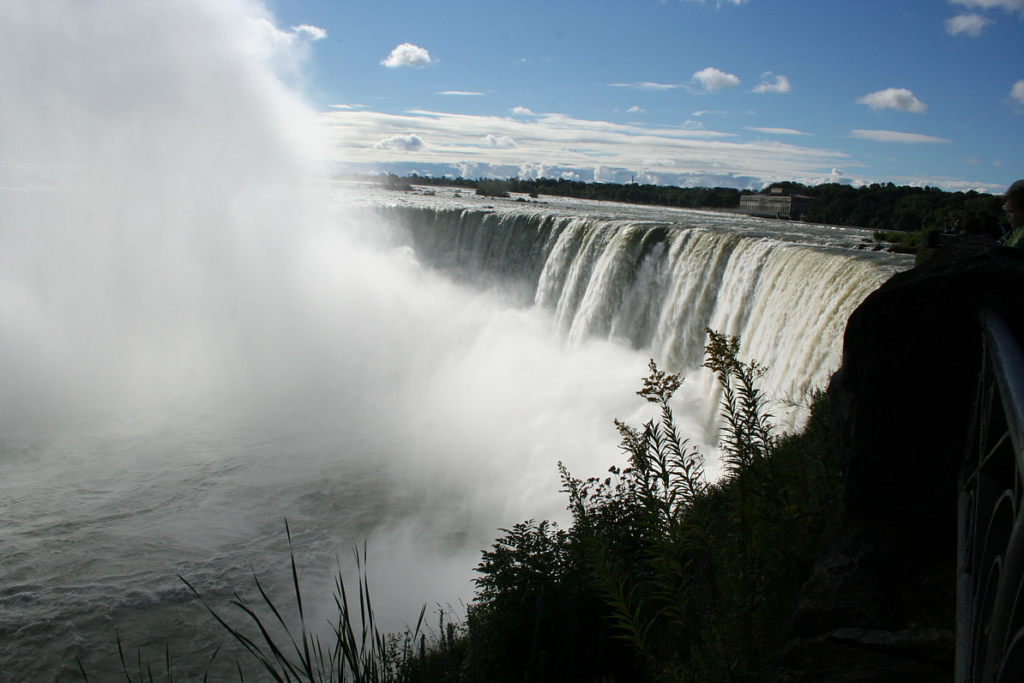
Niagara Falls | Courtesy Of Wikimedia Commons
19. Madison Square Garden
At #19 on our list of the Top 20 New York Landmarks is a site which is well known to many sports aficionados. Its Madison Square Garden.
Madison Square Garden is an iconic arena located in New York City. Its history dates back to the late 19th century, when the first Madison Square Garden was built in 1879. The original structure was designed by Stanford White, a famous architect of the time, and located on Madison Square Park.
It was a large open-air arena with seating for up to 10,000 people and hosted various sporting events, including boxing matches, bicycle races, and ice hockey games.
In 1890, the first indoor version of Madison Square Garden was built on the same site as the original structure. The new arena was designed by White and had a capacity of 8,000 people. It featured a wooden track for bicycle races and also hosted boxing matches, ice hockey games, and other events.
The second Madison Square Garden was home to the New York Rangers hockey team and the New York Knicks basketball team, among other sports teams.

It Was Demolished In 1925 To Make Way For The Current Arena
The second Madison Square Garden was demolished in 1925 to make way for the current arena, which was completed in 1927. The new arena was designed by the architectural firm of McKim, Mead, and White and was built on the same site as the previous two structures.

The current Madison Square Garden has a seating capacity of over 18,000 people and has been the site of countless sporting events, concerts, and other performances.
Over the years, Madison Square Garden has hosted many historic events, including boxing matches featuring legends like Muhammad Ali and Joe Frazier, concerts by artists like Elvis Presley and The Rolling Stones, and even political events like the 1924 Democratic National Convention.
The arena has also been the site of numerous championship games for various sports, including basketball, ice hockey, and boxing.
Today, Madison Square Garden remains one of the most iconic and recognizable arenas in the world. It continues to host major sporting events, concerts, and other performances, and has become a symbol of New York City’s rich cultural history.
18. Coney Island
We move from an iconic sports arena to one of America’s most famous amusement parks. At #18 on our list of the Best New York Landmarks is Coney Island.
It has a long and fascinating history that dates back to the mid-19th century. In the 1800s, Coney Island was a sparsely populated area with sandy beaches, dunes, and marshland. It wasn’t until the late 1800s that the area began to develop as a popular resort destination for New Yorkers seeking relief from the summer heat.
One of the first attractions to be built in Coney Island was the Coney Island Hotel in 1829. The hotel attracted wealthy visitors who would come to Coney Island for the beach and the sea air.
In the 1870s, the first amusement park was built in Coney Island, called Sea Lion Park. The park had several rides and attractions, including a roller coaster and a water slide.
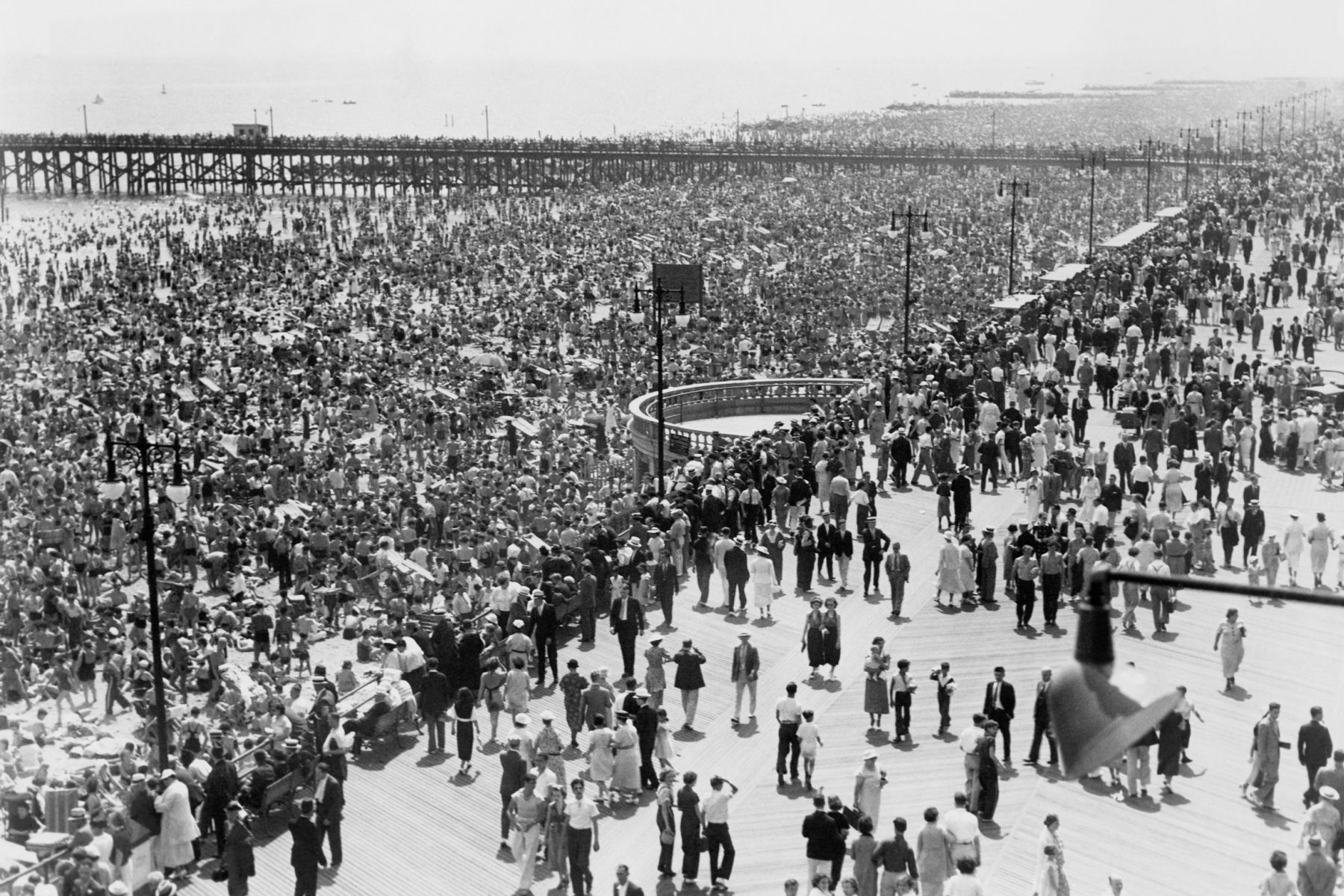
The Park Was A Huge Success
In 1895, the famous entrepreneur George C. Tilyou opened Steeplechase Park in Coney Island. The park was a huge success and featured attractions such as the “Funny Face” maze and the “Human Pool Table”. Tilyou also introduced the iconic Steeplechase Horse Ride, a roller coaster with horses that raced around a track.
Coney Island continued to grow as a popular destination throughout the early 20th century. Other amusement parks were built, including Luna Park, Dreamland, and Astroland. These parks featured some of the most innovative and thrilling rides of the time, such as the Cyclone roller coaster, the Wonder Wheel, and the Tornado.
During the 1920s and 1930s, Coney Island experienced a decline in popularity due to the Great Depression and changing cultural attitudes. However, it experienced a resurgence in the 1950s and 1960s with the introduction of new attractions like the Parachute Jump and the Thunderbolt roller coaster.
Today, Coney Island remains a popular tourist destination, with several amusement parks, restaurants, and other attractions. The area has also become known for its annual Mermaid Parade, a colorful celebration of art, music, and creativity. Coney Island’s rich history and iconic attractions continue to make it a beloved part of New York City’s cultural landscape.

The Hot Dog Eating Competition At Coney Island
The hot dog eating competition at Coney Island is an annual event held on the Fourth of July as part of the Nathan’s Famous Hot Dog Eating Contest. The contest is held at the original Nathan’s Famous hot dog stand on the boardwalk in Coney Island, New York.
The hot dog eating competition began in 1916, when a group of immigrants held a hot dog eating contest to prove their patriotism. The contest became an annual event, and in 1972, Nathan’s Famous began sponsoring the event.
The rules of the competition are simple: contestants must eat as many hot dogs and buns as possible in 10 minutes. The hot dogs must be fully eaten and the buns must be dipped in water to make them easier to swallow. The winner is the contestant who eats the most hot dogs and buns within the time limit.
The competition has become a highly publicized event, with thousands of spectators watching as competitors from around the world try to break the record for the most hot dogs eaten. The current world record is held by Joey Chestnut, who ate 76 hot dogs and buns in 10 minutes in 2021.
The hot dog competition has become a beloved tradition in Coney Island, drawing crowds of locals and tourists alike. The event is televised live on ESPN and has become a symbol of American culture and patriotism.

17. New York Public Library
So many amazing landmarks. So little time. We’re on to #17 on our list of the Best New York Landmarks. And it’s one of the largest public library systems in the world, with over 90 branch locations throughout the boroughs of Manhattan, the Bronx, and Staten Island. Welcome to the New York Public Library.
Its history dates back to the late 19th century, when the Astor Library and the Lenox Library were established in New York City.
The Astor Library was founded in 1849 by John Jacob Astor, a wealthy businessman and philanthropist. The library was designed to be a free, public resource for the people of New York City, and it quickly became one of the most important cultural institutions in the city.
The Lenox Library was founded in 1870 by James Lenox, another wealthy philanthropist who wanted to create a library that would rival the great libraries of Europe.
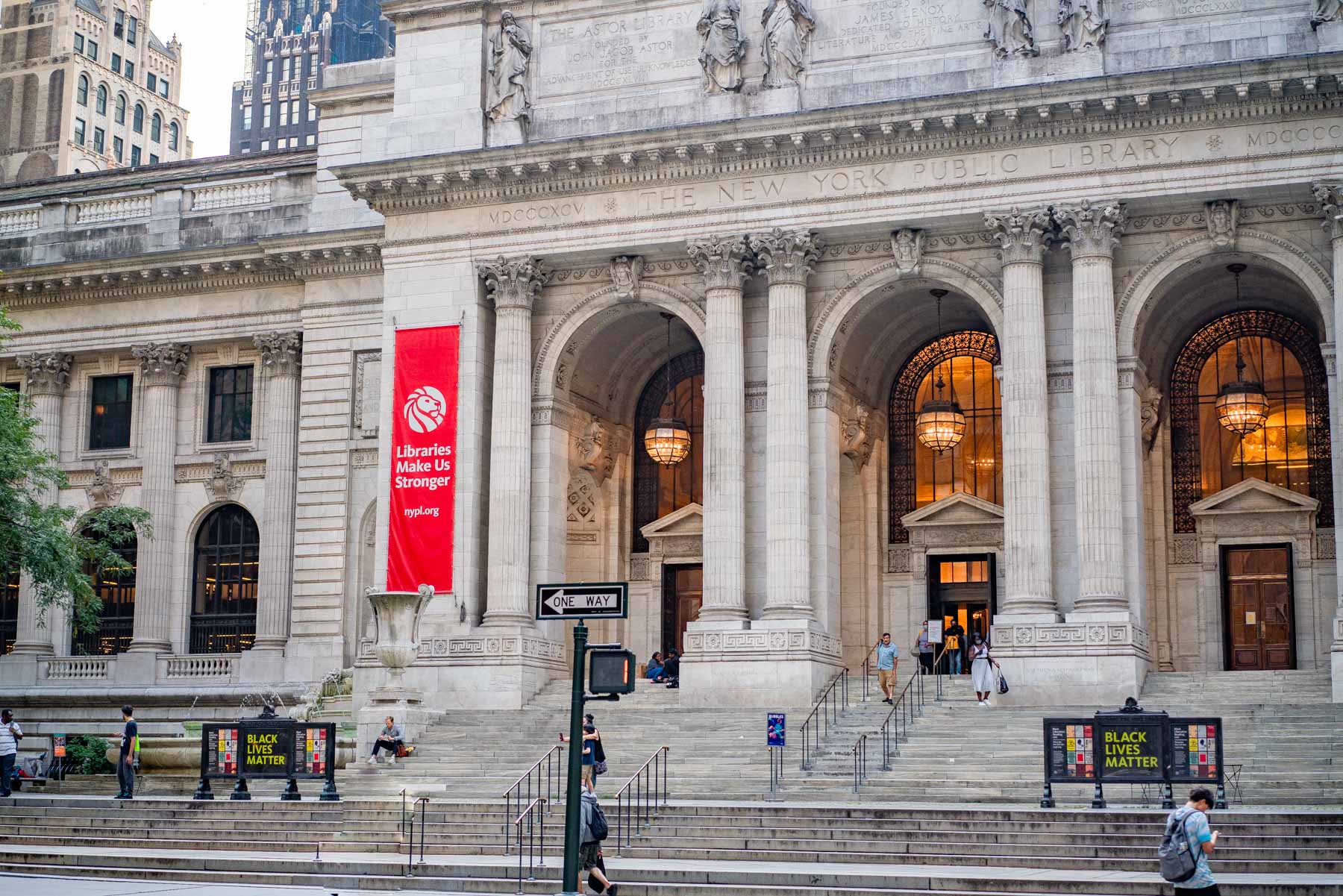
Two Libraries Merged To Form The New York Public Library
In 1895, the Astor Library and the Lenox Library merged to form the New York Public Library. The new library was housed in a grand building on Fifth Avenue, designed by the architects Carrere and Hastings.
The building was constructed in the Beaux-Arts style and featured a grand central hall with a ceiling mural by artist Edwin Blashfield.
Over the years, the New York Public Library has continued to expand, adding new branches throughout the city and increasing its collections of books, manuscripts, and other materials. The library has become a cultural icon in New York City, known for its extensive collections and its beautiful Beaux-Arts building.
Today, the New York Public Library is a vital resource for the people of New York City and beyond. Its collections include over 53 million items, including books, manuscripts, maps, photographs, and more.
The library’s flagship building on Fifth Avenue is a popular tourist destination, attracting visitors from around the world who come to see its grand architecture and explore its vast collections.
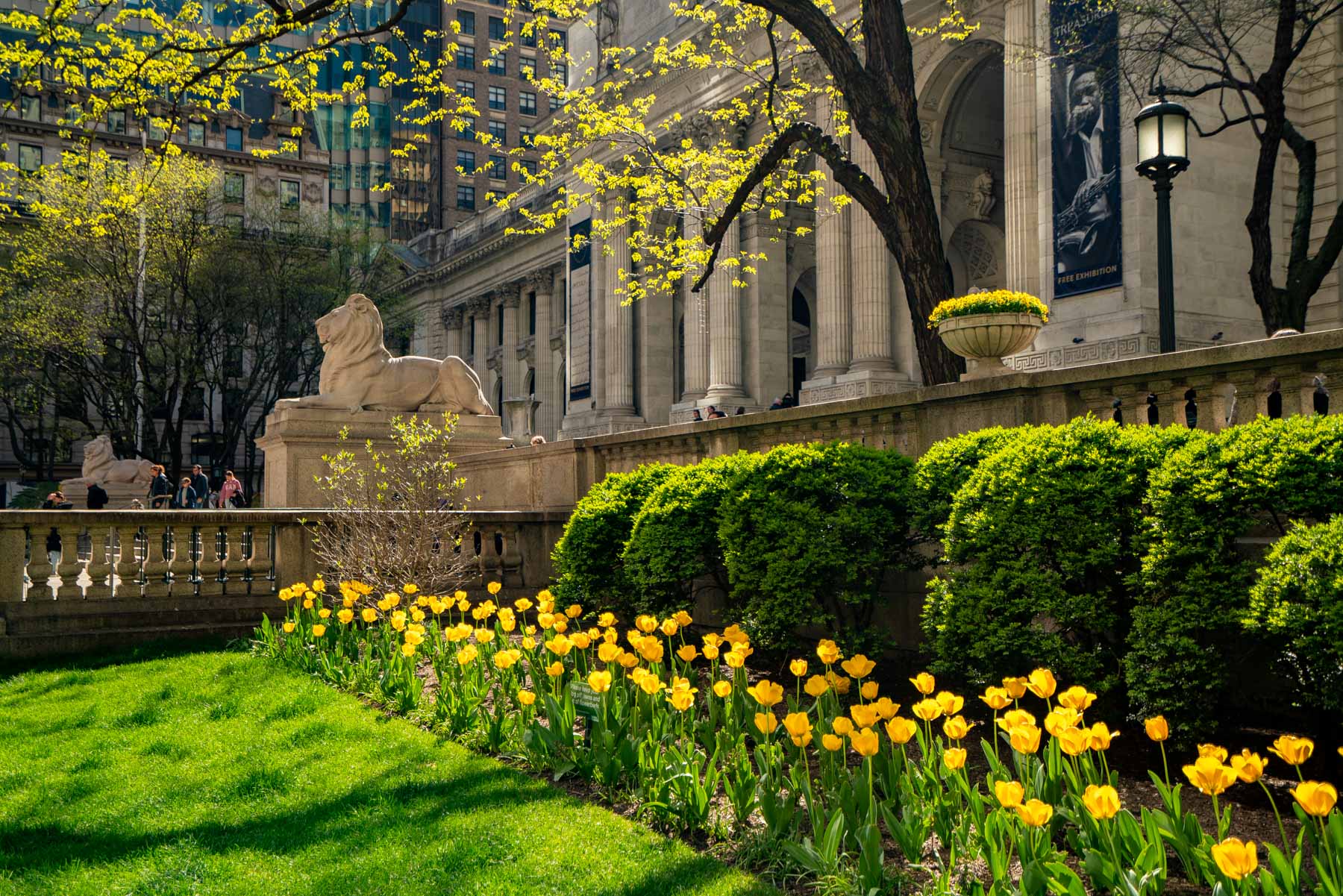
16. Cooperstown
If you’re a fan of America’s national pastime then our next landmark is one that you’ll definitely love. At #16 on our list of the Best New York Landmarks is Cooperstown.
Cooperstown was founded in 1786 by William Cooper, a judge and landowner who owned large tracts of land in the area. Cooper built a sawmill and a gristmill on the site, and the village grew quickly as farmers and settlers moved to the area.
In 1819, James Fenimore Cooper, the son of William Cooper and a well-known author, moved to Cooperstown and built a large estate called Otsego Hall. James Fenimore Cooper is best known for his novel “The Last of the Mohicans,” and he is often considered one of America’s greatest writers.
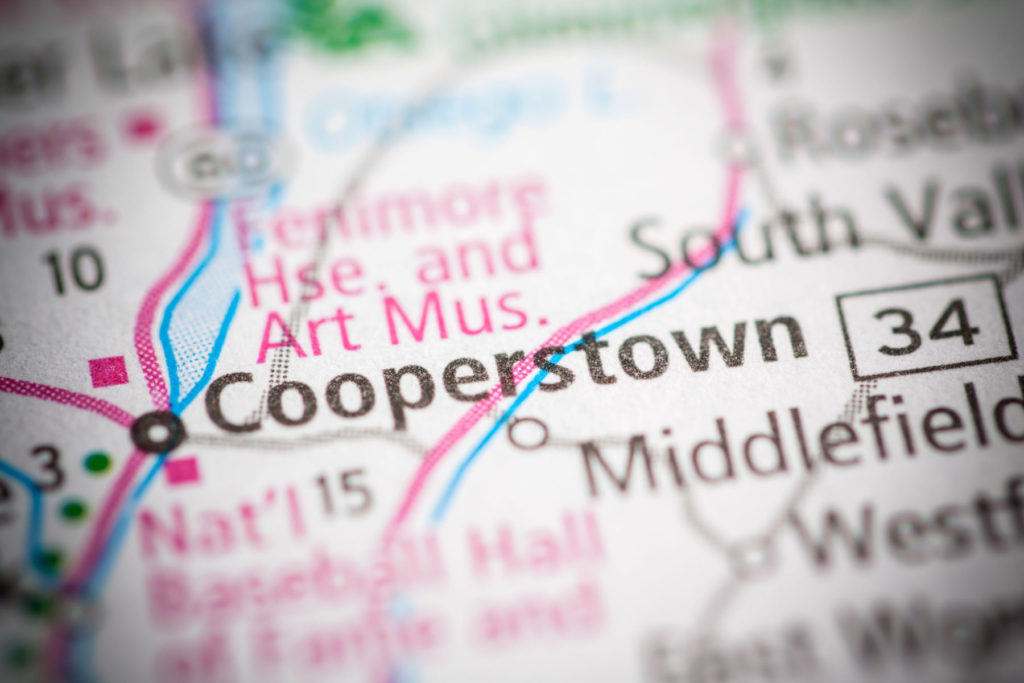
National Baseball Hall Of Fame
In the 1830s and 1840s, Cooperstown became a popular tourist destination, with visitors coming to see the natural beauty of the area and to visit the various museums and cultural institutions.
The village also became known for its association with baseball, thanks to the efforts of Abner Doubleday, a Civil War hero who was said to have invented the game of baseball in Cooperstown in 1839.
In 1939, Cooperstown became home to the National Baseball Hall of Fame and Museum, which was founded to celebrate the history of baseball and its greatest players. The Hall of Fame has become a major tourist attraction, drawing visitors from around the world to Cooperstown.

Today, Cooperstown remains a charming and historic village, known for its beautiful architecture, natural beauty, and association with baseball.
The village is home to several museums and cultural institutions, including the Fenimore Art Museum, the Farmers’ Museum, and the Glimmerglass Opera.

Top 15 New York Landmarks
15. Central Park
Its more than 18,000 trees cool and clean the air and its vast acreage in the center of the City provides habitat for wildlife, including as a stopover on the Atlantic Flyway for over 200 species of birds.
We’re on to the Top 15 New York Landmarks and at #15 is New York’s iconic Central Park.
Its original purpose was to offer urban dwellers an experience of the countryside, a place to escape from the stresses of urban life and to commune with nature and fellow New Yorkers. In the process, it revolutionized urban parks.
Central Park is a public park located in the heart of Manhattan, New York City. It was first proposed in 1857 by Frederick Law Olmsted and Calvert Vaux, who won a design competition to create the park. Construction began in 1858 and was completed in 1873.
The park is 843 acres and is home to numerous landmarks, including the Central Park Zoo, the Central Park Conservatory Garden, the Bethesda Fountain, the Delacorte Theater, and the Central Park Mall.
The park was created as a response to the urbanization and industrialization of New York City in the mid-19th century.
Olmsted and Vaux’s design aimed to provide a natural oasis within the city, with the intention of providing a place for the public to enjoy nature and escape the hustle and bustle of the city.

A Popular Destination For New Yorkers
Throughout its history, Central Park has been a popular destination for New Yorkers and visitors alike. It has been the site of numerous events and cultural performances, including concerts, theater performances, and art exhibitions.
In the 20th century, the park underwent a major restoration and renovation, led by Robert Moses, which aimed to address decades of neglect and improve the park’s infrastructure.
Central Park is now considered one of the most famous and iconic parks in the world, attracting millions of visitors each year.
It is known for its lush greenery, beautiful landscapes, and numerous recreational opportunities, including walking, jogging, and picnicking. It’s also a place for cultural and artistic expression, hosting events such as Shakespeare in the Park, the Summer Stage concert series, and many more.
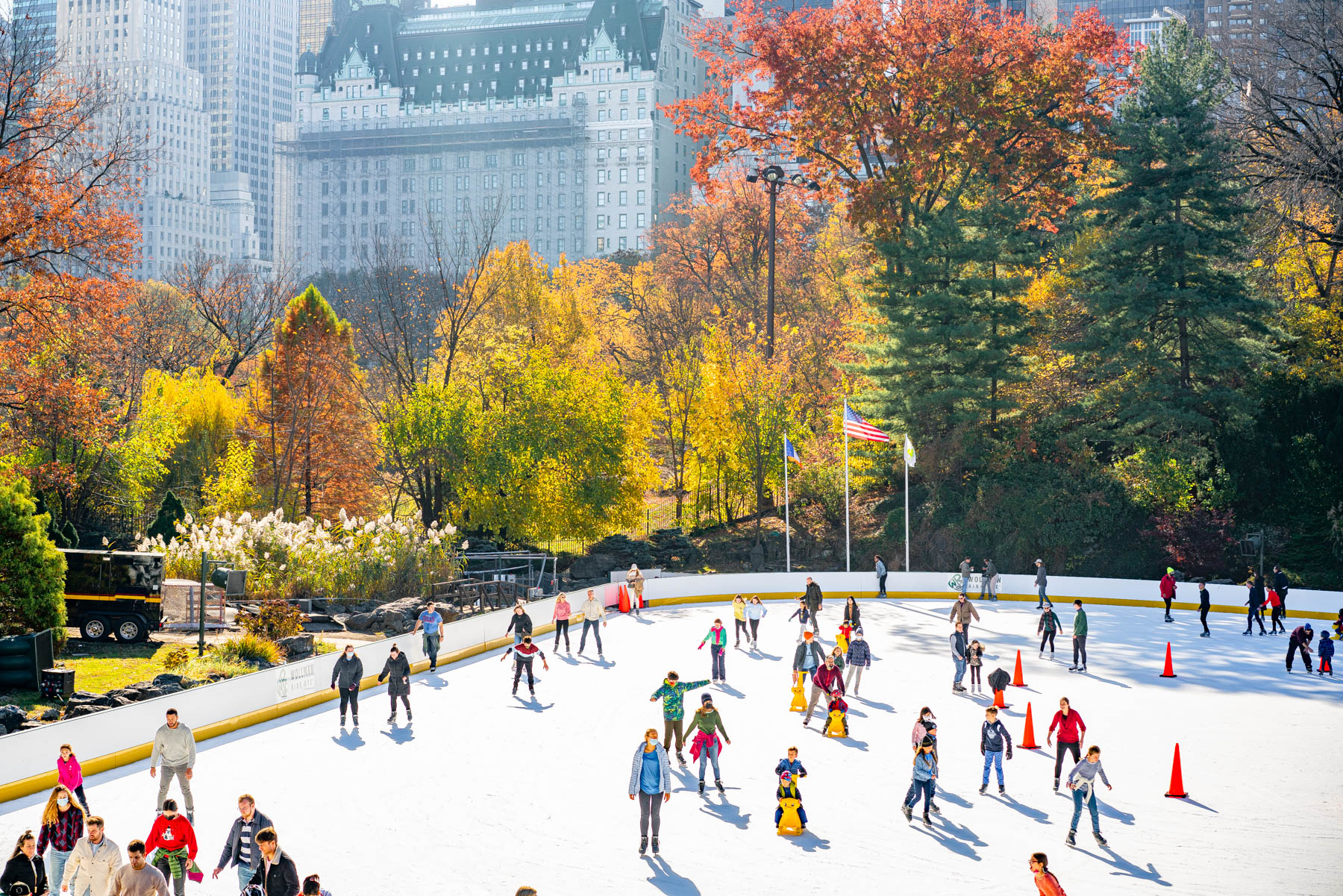
14. Radio City Music Hall
It’s the largest indoor theater in the world. Its marquee is a full city-block long. Its auditorium measures 160 feet from back to stage and the ceiling reaches a height of 84 feet.
Welcome to Radio City Music Hall. And it’s #14 on our list of the Best New York Landmarks.
Radio City Music Hall opened in 1932 and has since become one of the most famous and recognizable theaters in the world.
The idea for Radio City Music Hall was conceived in the late 1920s by the Rockefeller family and their associates, who wanted to create a state-of-the-art entertainment venue that would reflect the glamour and sophistication of the city. They enlisted the help of architect Edward Durell Stone and designer Donald Deskey to bring their vision to life.
Construction of the theater began in 1930 and was completed in just 14 months. The building was designed in the Art Deco style, with a grand foyer, a massive auditorium, and a stage that was large enough to accommodate elaborate productions.
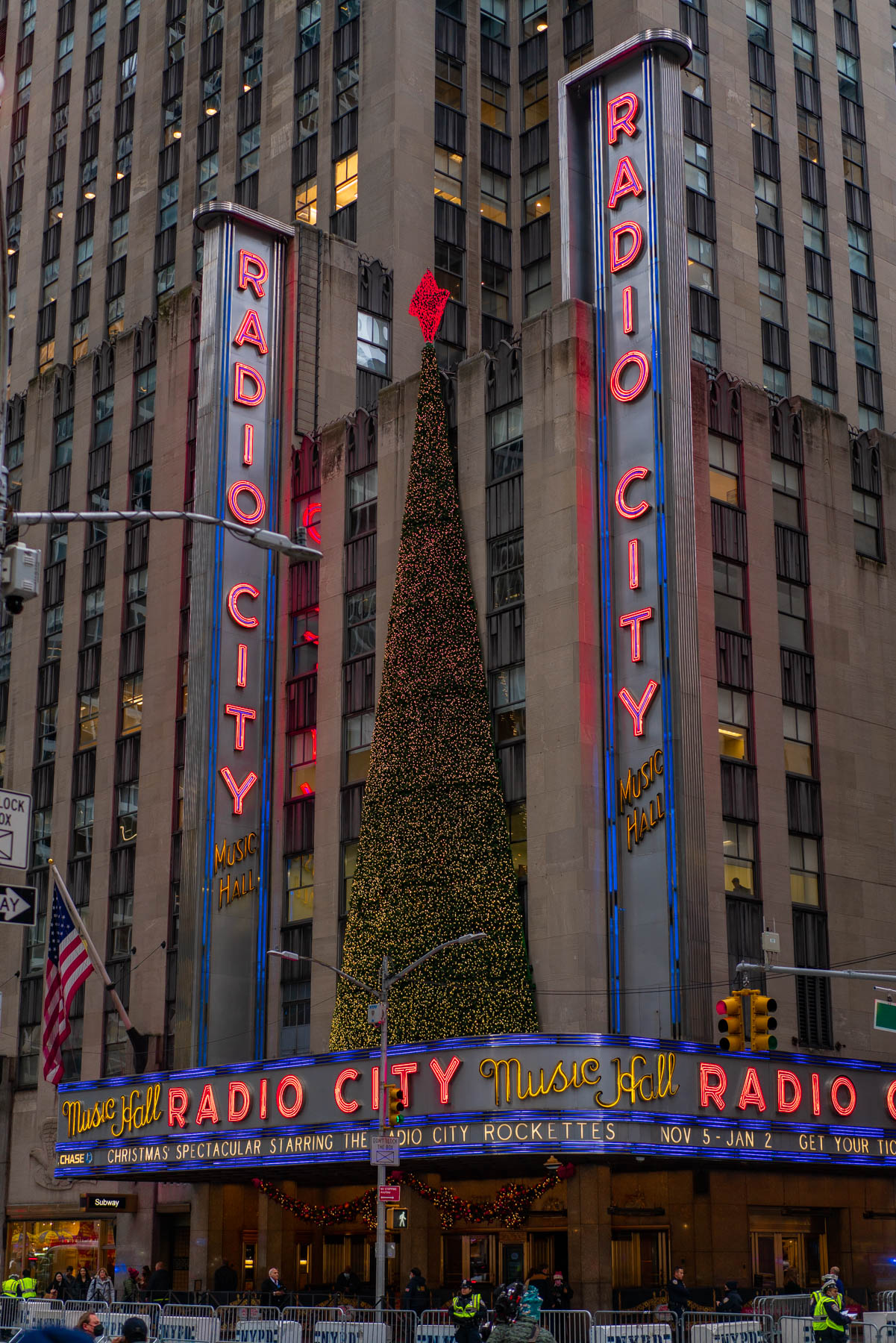
It Became A Popular Destination For Tourists
Radio City Music Hall officially opened on December 27, 1932, with a gala featuring a live performance by the Mighty Wurlitzer organ. The venue quickly became a popular destination for moviegoers, who flocked to see the latest films and enjoy the lavish stage shows that were part of the theater’s programming.
During World War II, the theater was used to host war bond rallies and other patriotic events. In the postwar years, Radio City Music Hall continued to be a hub of entertainment, hosting concerts, dance performances, and comedy shows.
In the 1970s and 1980s, the theater fell on hard times, as changing tastes and competition from other entertainment venues led to declining attendance. The theater was briefly closed in the late 1970s, but it was saved from demolition by a group of investors who recognized its historic and cultural significance.
Today, Radio City Music Hall is once again a thriving entertainment venue, hosting concerts, comedy shows, and other events throughout the year. The venue is also home to the famous Rockettes, who perform their legendary Christmas Spectacular each holiday season.

The Radio City Music Hall Rockettes | Courtesy of Wikimedia Commons
13. Trinity Church
At #13 on our list of the 20 Best Landmarks In New York Is Trinity Church. It’s a historic church located at the intersection of Broadway and Wall Street in the Financial District of Lower Manhattan.
It was founded in the 17th century, and it is one of the oldest parishes in New York City. The current building, which is considered one of the first Gothic Revival buildings in New York City, was completed in 1846, replacing the original church that had been destroyed in the Great Fire of New York in 1776.
The church’s architecture is notable for its Gothic style, featuring pointed arches, ribbed vaults, and ornate stone carvings. The surrounding cemetery is the burial place of many historical Americans, including Alexander Hamilton, one of the founding fathers of the United States, and Francis Lewis, a signer of the Declaration of Independence.
Throughout its history, Trinity Church has played an important role in the cultural and spiritual life of New York City. It has been a significant institution in the city, and it continues to be an active parish and a popular tourist destination.
The church offers a variety of services and programs, including regular Sunday services, concerts, and educational programs that highlight the history and cultural significance of the church and its role in the development of New York City.
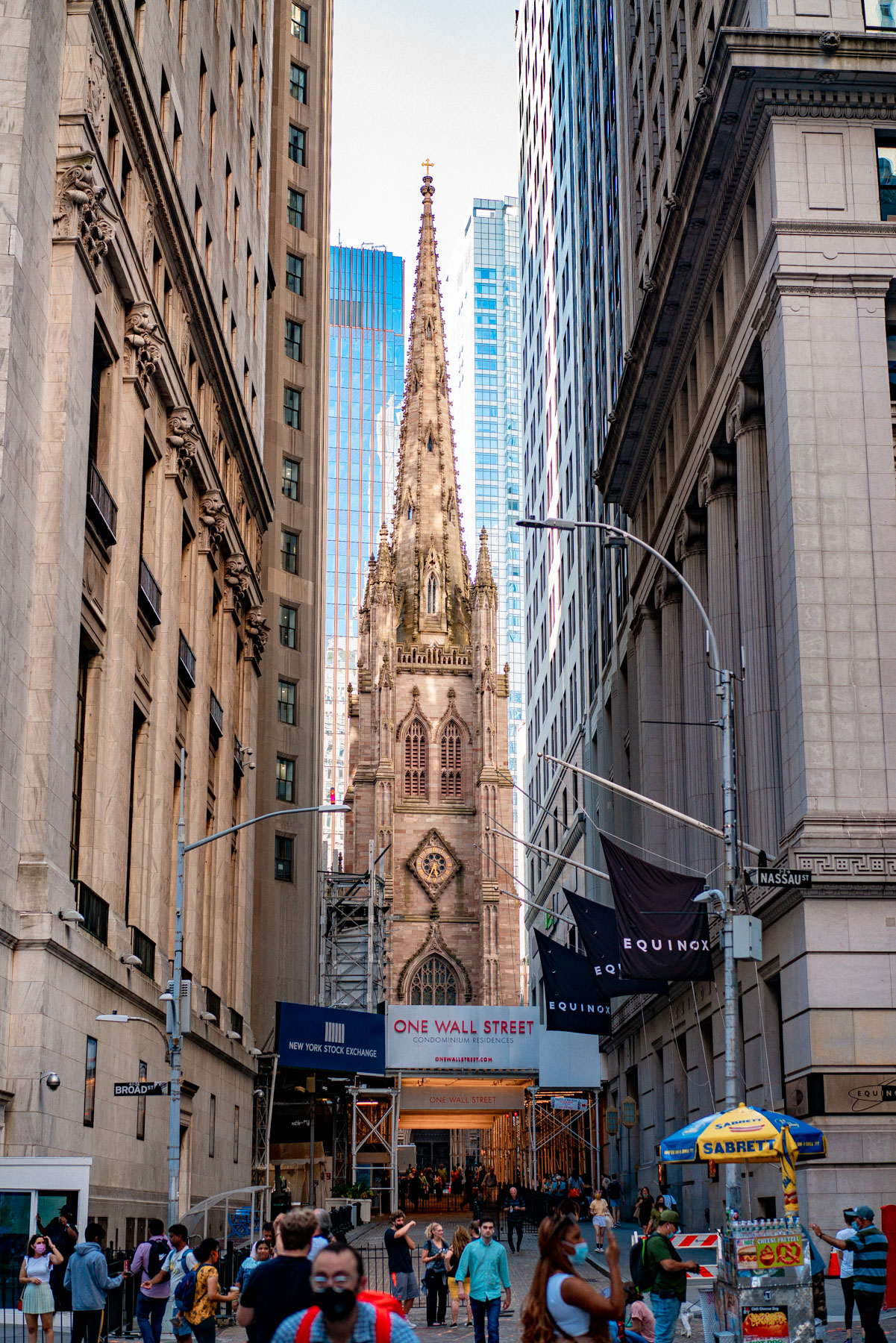
12. New York Stock Exchange
At #12 on our list of the Best New York Landmarks is the financial center of the universe. It’s the biggest marketplace in the world for investors to buy and sell shares of stock. Located on Wall Street in New York City and owned by Intercontinental Exchange, the NYSE has a history that goes back more than 200 years.
Its history dates back to the late 18th century, when a group of brokers began trading stocks outside of the Tontine Coffee House in New York City.
In 1792, these brokers signed the Buttonwood Agreement, which established rules and regulations for trading stocks and securities in the city. This agreement marked the birth of what would eventually become the New York Stock Exchange.
Over the next several decades, the exchange grew and evolved, moving from its original location on Wall Street to a larger building in the 1860s. The exchange continued to expand its offerings, adding new stocks and securities and increasing its trading volume.
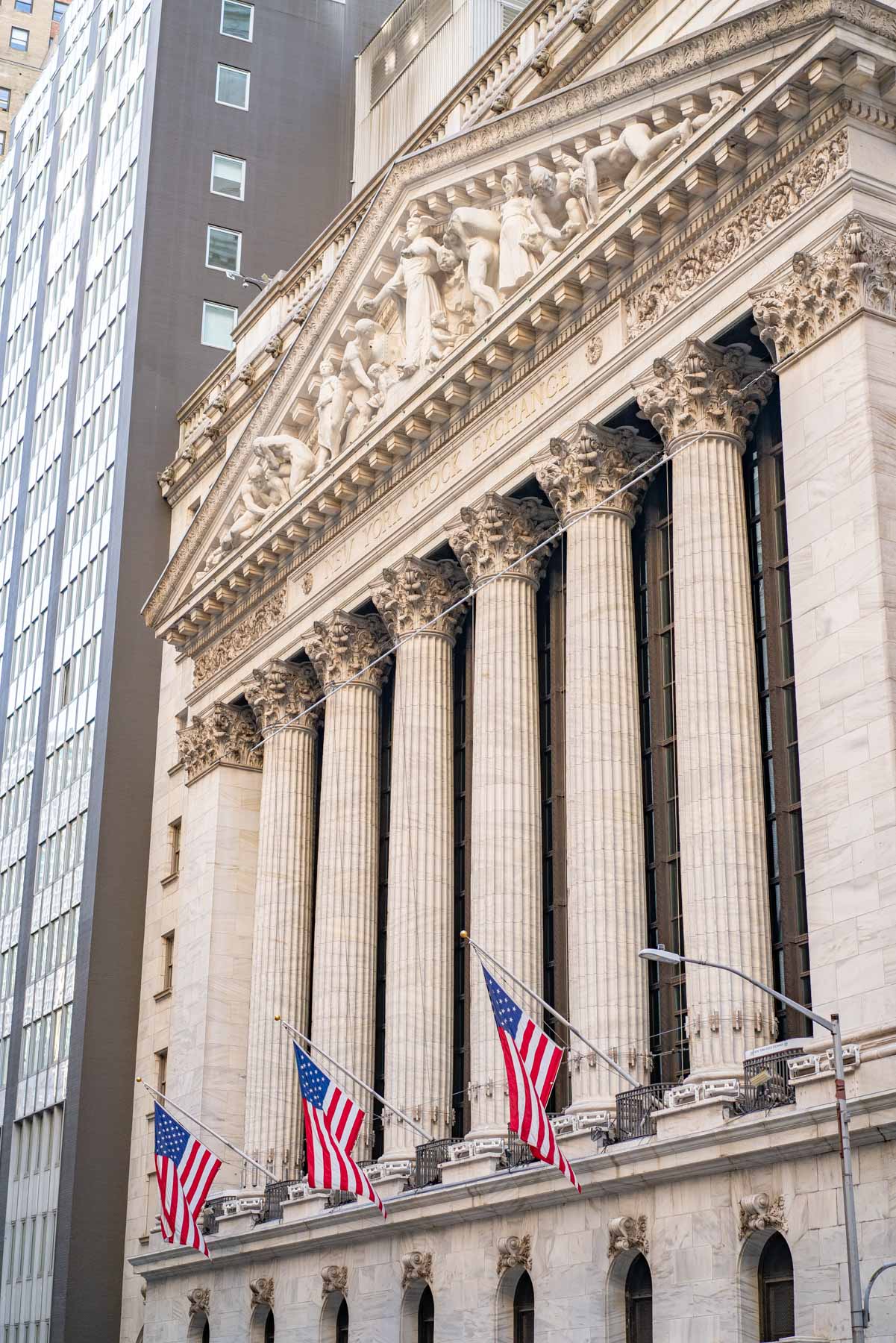
The NYSE In The 20th Century
In the 20th century, the NYSE played a key role in the growth of the American economy. It weathered the stock market crash of 1929 and the subsequent Great Depression, and it helped finance the country’s participation in World War II.
In the postwar years, the exchange continued to be a symbol of American prosperity and economic strength.
Throughout its history, the NYSE has faced many challenges and changes, including the rise of electronic trading and increased global competition.

The NYSE In The 21st Century
In the 21st century, the exchange has continued to adapt, merging with other exchanges and embracing new technologies to maintain its position as a leading player in the global financial markets.
Today, the NYSE is a global symbol of financial power and influence, with a market capitalization of trillions of dollars and thousands of companies listed on its exchange.
It continues to play a crucial role in the world of finance and investment, shaping the course of the global economy and the lives of millions of people around the world.
11. Fraunces Tavern
We move from the global financial center to a historic tavern. At #11 on our list of the Best New York Landmarks is Fraunces Tavern. It’s a historic building located in Manhattan, New York City.
It was originally built in 1719 by the De Lancey family, and is considered the oldest tavern in New York City and the oldest standing structure in Manhattan.
The tavern served as a meeting place for prominent figures such as George Washington, Alexander Hamilton, and the Sons of Liberty during the American Revolutionary War.

Fraunces Tavern on Broad Street on a cloudy afternoon in early spring. Bishop crook lamppost | Courtesy of Wikimedia Commons
Saved By The Daughters Of The American Revolution
In 1900, the building was meant to be demolished but the Daughters of the American Revolution, with the help of Andrew H. Green, attempted to purchase and preserve the property. However, their efforts were unsuccessful, until the city came together to save the building.
The building was then purchased by the Sons of the Revolution in the State of New York, who restored and preserved it as a museum.
Today, Fraunces Tavern serves as a museum and a National Historic Landmark, showcasing the history of the American Revolution and the role of the tavern in colonial New York.
Visitors can tour the restored tavern, see exhibits on the American Revolution, and attend educational programs and events. The tavern also operates as a restaurant, serving traditional colonial fare.
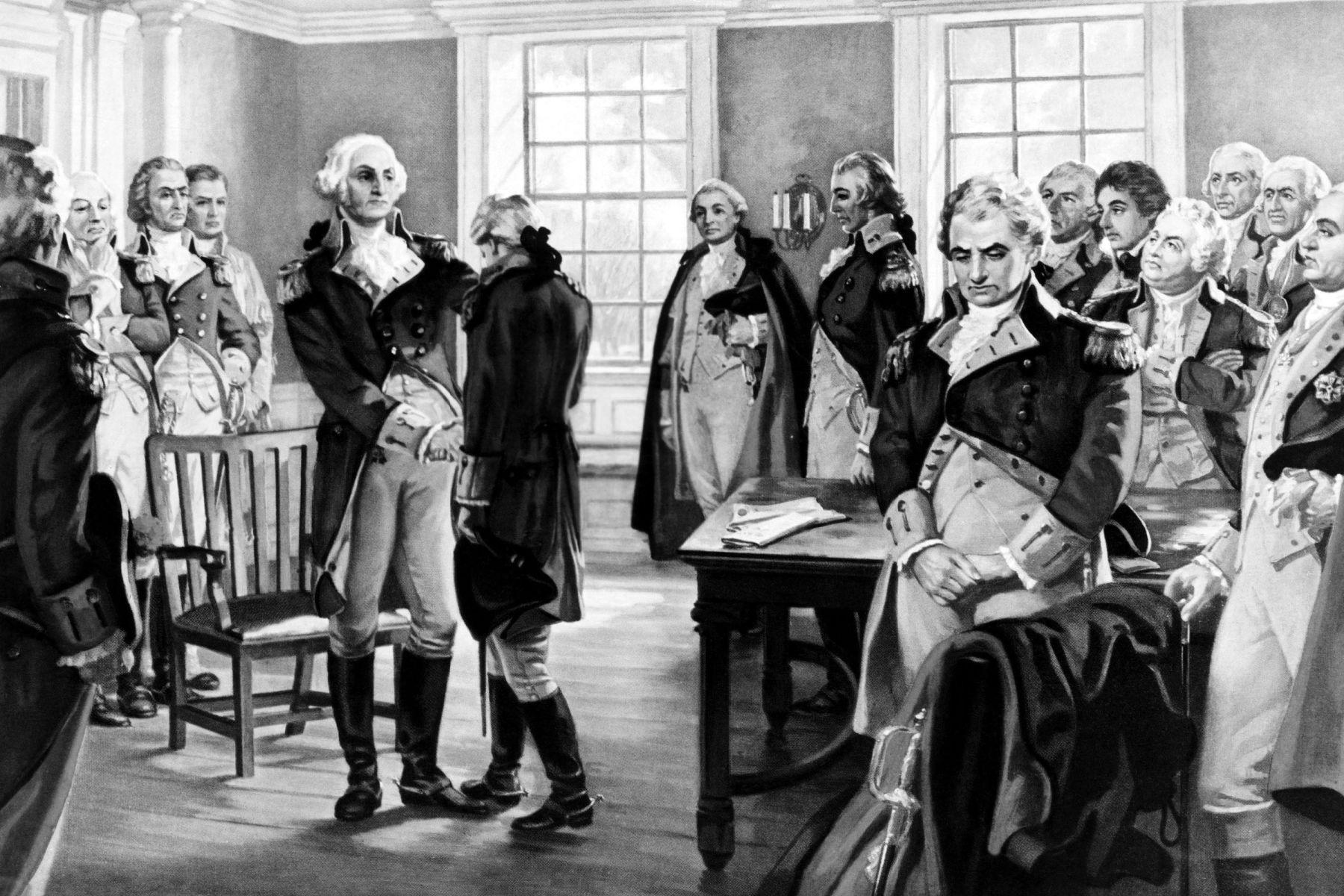
The Top 10 Landmarks In New York
10. Broadway
We’re on to the Top 10 New York Landmarks. At #10 we have a place that’s a boulevard full of famous theaters where visitors from all over the world gather to watch the top musicals of the season and other great plays.
The avenue is also famous for being the only street that runs through Manhattan at an oblique angle. Welcome to Broadway.
Its history dates back to the 18th century, when the street was known as the “Wickquasgeck Road” and connected the Dutch colonial settlement of New Amsterdam with the village of Harlem.
In the early 19th century, Broadway began to evolve into an entertainment hub, with theaters and other performance venues opening along the street.
The first theater on Broadway was the Park Theater, which opened in 1798 and presented a mix of plays, musical performances, and other shows.
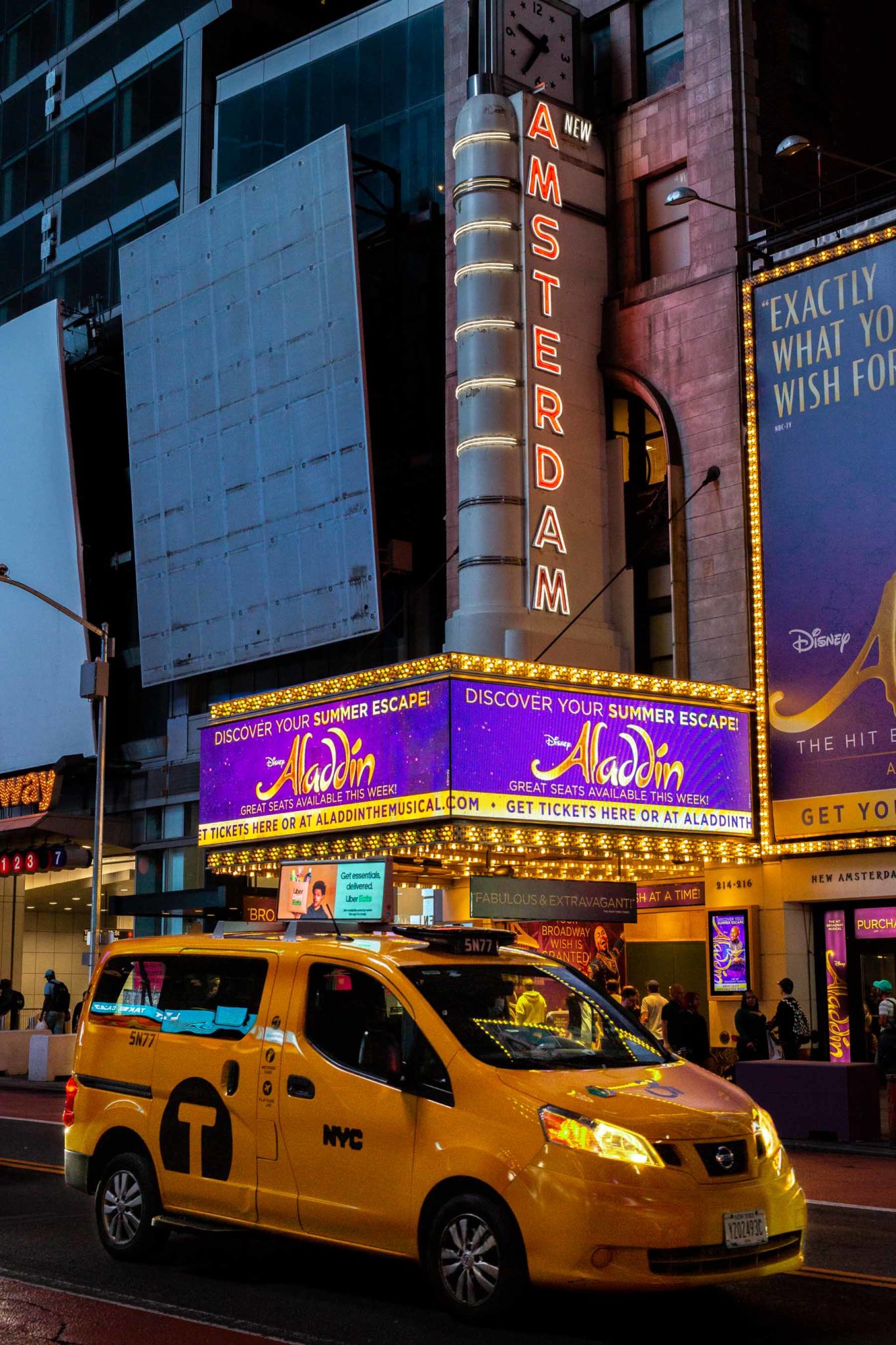
It’s A Center Of American Theater
Throughout the 19th and early 20th centuries, Broadway continued to be a center of American theater, with dozens of theaters and performance venues lining the street. Many famous plays and musicals premiered on Broadway during this time, including “Oklahoma!”, “West Side Story”, and “A Chorus Line”.
In the mid-20th century, Broadway faced competition from other forms of entertainment, such as movies and television, but it continued to thrive thanks to the popularity of musicals and the influx of tourists to New York City.
In recent decades, Broadway has experienced a resurgence in popularity, with a new generation of shows and performers captivating audiences from around the world.
Today, Broadway is a vital part of the New York City cultural scene, with dozens of shows running at any given time and millions of people attending performances each year. It remains a symbol of American theater and a showcase for the talents of some of the world’s most talented actors, musicians, and artists.

9. Metropolitan Museum Of Art
New York City features more world class museums than any other city in America and, if you love art, then you’ll love what’s next. At #9 on our list of the Best Landmarks In New York is the Metropolitan Museum of Art.
The Metropolitan Museum of Art, commonly known as “the Met,” is one of the largest and most comprehensive art museums in the world.
The museum’s collection includes over 2 million works of art spanning 5,000 years of world culture, from ancient Egypt to contemporary art. The Met has collections of American, European, Egyptian, Greek, Roman, Asian, African, Oceanic, Byzantine, and Islamic art, as well as the Costume Institute, the American Wing, and the Met Cloisters.
The Met’s main building, located at the edge of Central Park on Fifth Avenue, is a Beaux-Arts structure designed by American architects Calvert Vaux and Jacob Wrey Mold.
The museum also operates several smaller facilities, including The Met Cloisters in Upper Manhattan, which focuses on medieval art, and The Met Breuer on Madison Avenue, which focuses on modern and contemporary art.
The Met is open seven days a week and offers a wide range of programs and services for visitors, including guided tours, lectures, workshops, and family programs. The museum also operates a research library, conservation lab, and an online collection database that is accessible to the public.
Admission to the Met is “pay what you wish,” meaning that visitors can pay whatever they can afford. However, some special exhibitions and events may have an additional admission fee.
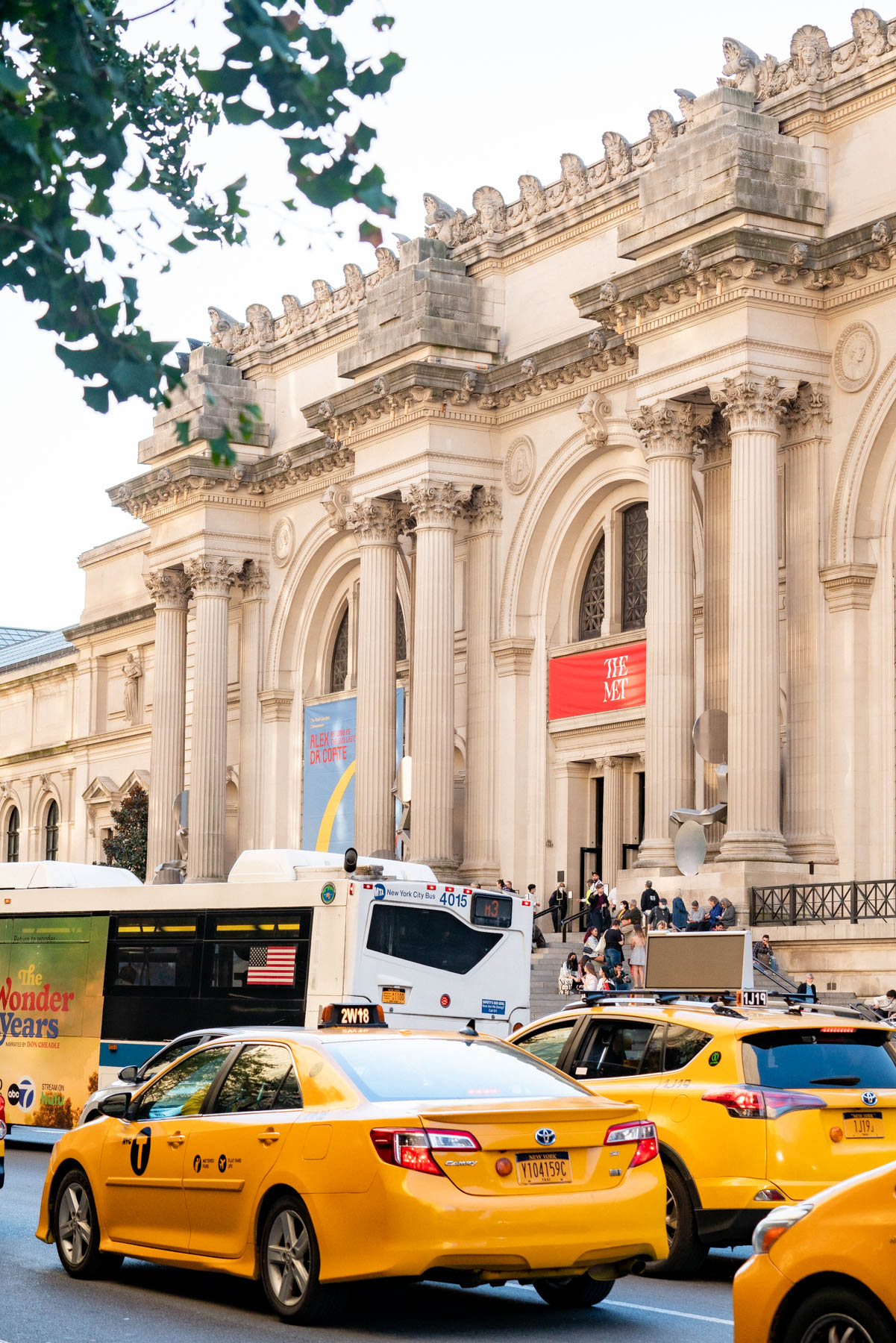
8. Brooklyn Bridge
Upon its completion in 1883, our next New York Landmark became the first roadway to connect Manhattan and Brooklyn, which were then separate cities (Brooklyn became part of New York City in 1898).
At #8 on our list of the Best New York Landmarks is the Brooklyn Bridge.
The Brooklyn Bridge was built in 1883. It was the first suspension bridge to use steel for its cable wire. It was the first bridge to use explosives in a dangerous underwater device called a caisson.
At the time it was built, the 3,460-foot Brooklyn Bridge was also crowned the longest suspension bridge in the world spanning 1,595 feet (486 meters) across the East River.
The bridge was designed by John A. Roebling, and its construction was led by his son, Washington Roebling, after John Roebling died from an injury sustained during the initial construction.
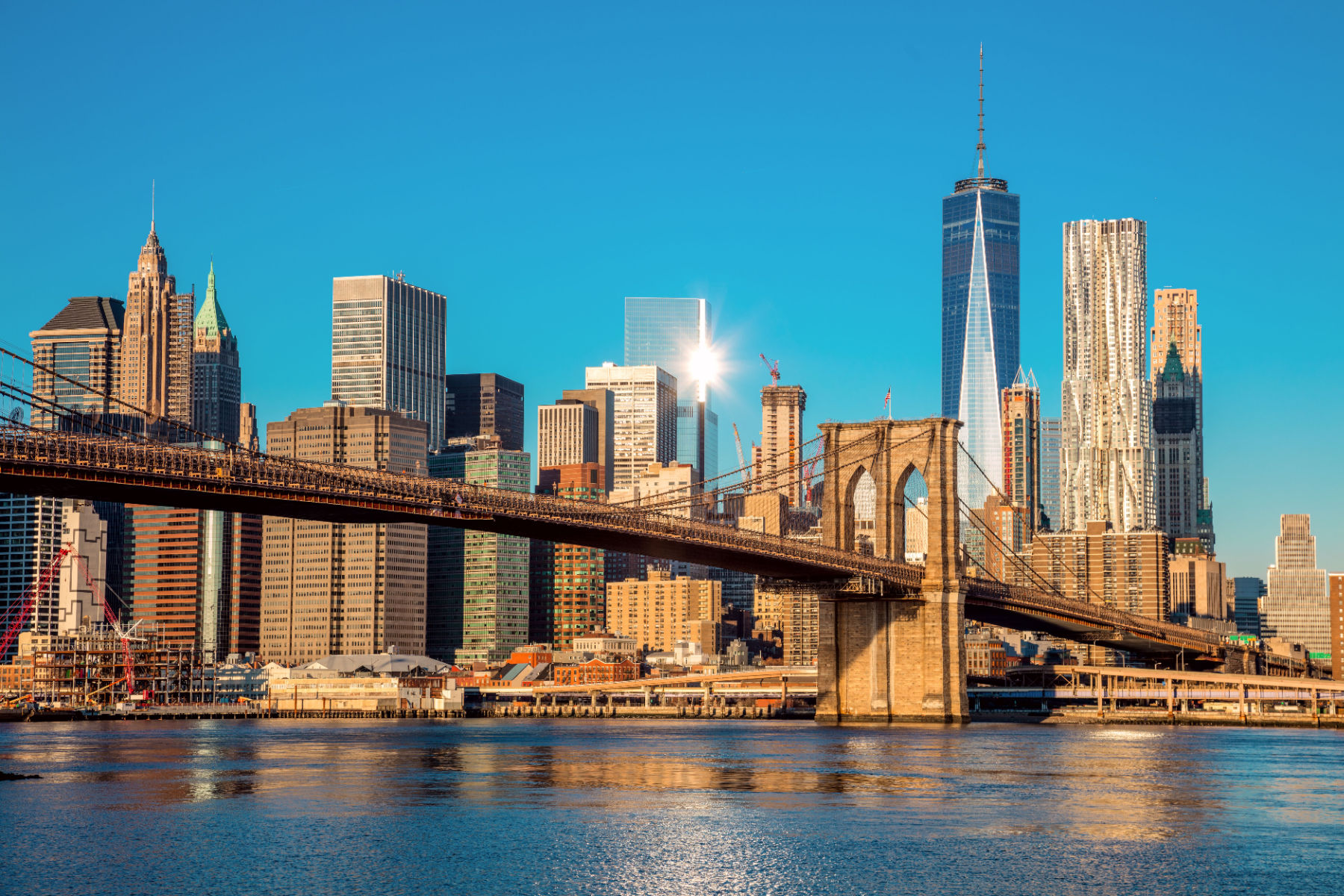
Brooklyn Was Not Considered Part Of New York City
Before the Brooklyn Bridge was built, Brooklyn was considered a separate city entirely, and not classified as part of New York City.
The bridge was a major engineering feat of its time, and it was a crucial link in connecting the two cities, making it much easier for people to travel between the two. It was also a symbol of the city’s growth and the future.
Today, the Brooklyn Bridge is a National Historic Landmark and a New York City Landmark, and it continues to be an important transportation link and a popular tourist destination. Visitors can walk or bike across the bridge and enjoy the views of the city and the river, it is also a great spot for photography and sightseeing.
The Brooklyn Bridge is a symbol of New York City’s history, engineering, and culture and it’s considered an iconic landmark of the city.
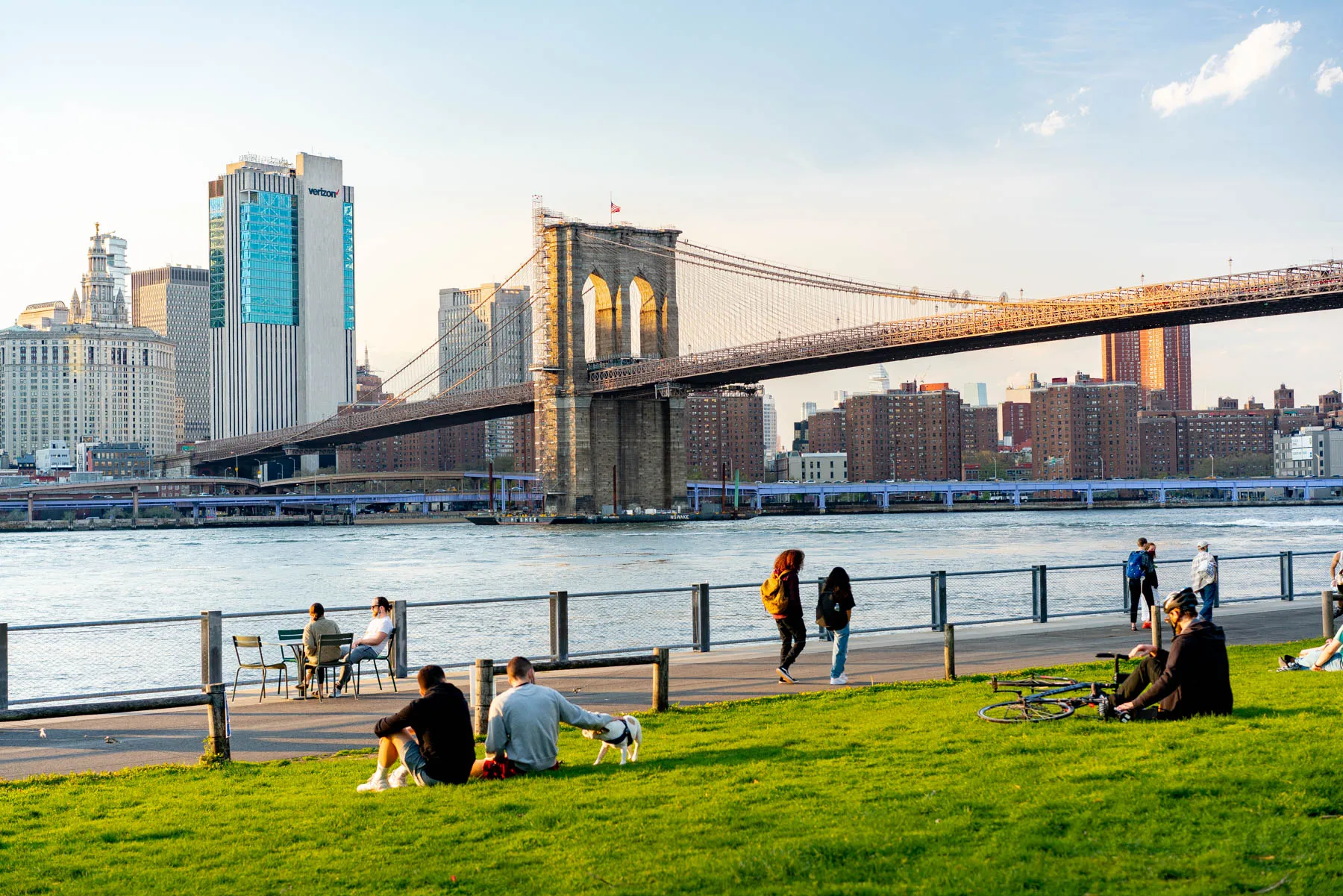
7. Grand Central Station
We move from bridges to railroad terminals. At #7 on our list of the Best Landmarks In New York we have no ordinary railroad terminal however. Welcome to Grand Central Station.
Grand Central Terminal, often referred to as Grand Central Station, is a train station located in Midtown Manhattan, New York City. It is one of the most iconic buildings in the city and a major transportation hub for commuters and tourists alike.
The history of Grand Central Terminal dates back to the mid-19th century when the New York and Harlem Railroad Company built a train depot on the site in 1854.
The depot was later replaced by the Grand Central Depot, which opened in 1871. This structure was a three-story, red-brick building with two train sheds and a waiting room that could accommodate up to 500 passengers.
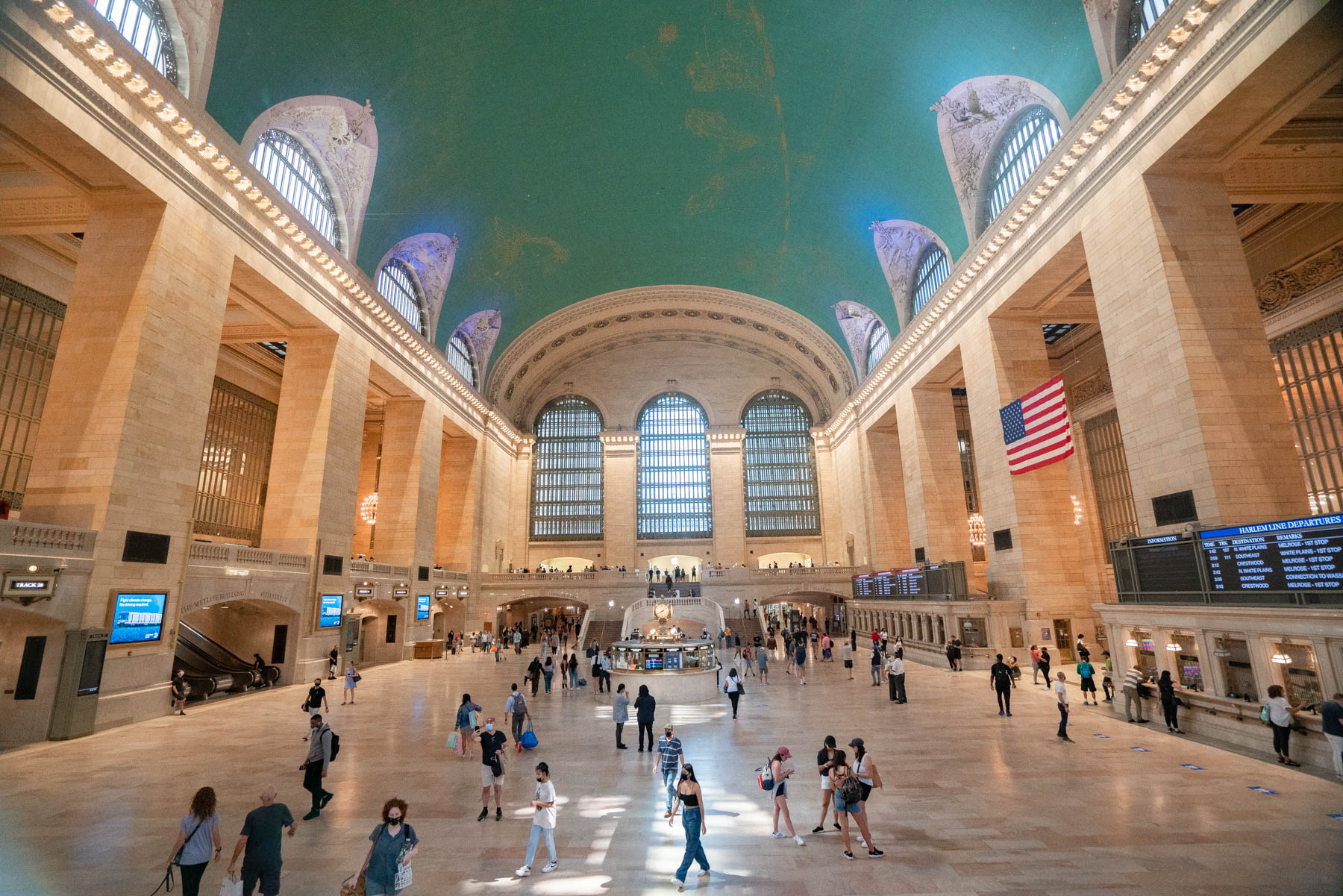
A Truly Amazing Story Of A Terminal Reborn
By the turn of the 20th century, the Grand Central Depot was outdated and could no longer handle the growing number of commuters and trains.
In 1903, the New York Central and Hudson River Railroad, which had acquired the property, decided to build a new, larger terminal. The company hired architects Reed and Stem and Warren and Wetmore to design the new Grand Central Terminal.
Construction of the new terminal began in 1903 and was completed in 1913, at a cost of $80 million (equivalent to over $2 billion today).
The new terminal was a grand Beaux-Arts building with a concourse over 400 feet long and a ceiling over 120 feet high. It featured a large main waiting room, several restaurants, shops, and other amenities.
The terminal also had a unique feature: a large, four-faced clock atop the main entrance, which became a popular meeting spot for New Yorkers.
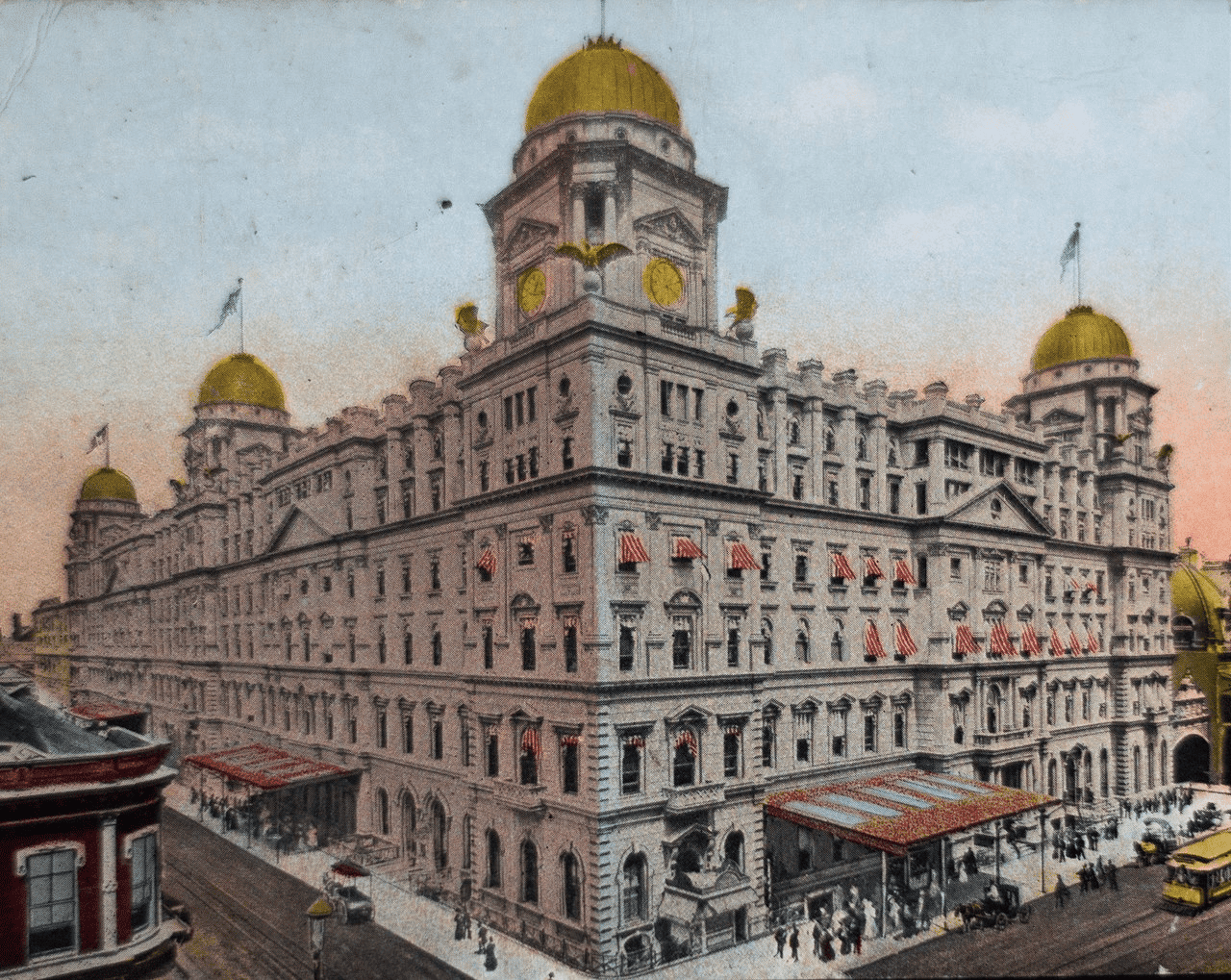
It’s Undergone Several Renovations & Restorations
Over the years, Grand Central Terminal has undergone several renovations and restorations. In the 1920s and 1930s, the terminal was electrified, and its tracks were extended to accommodate longer trains.
During World War II, the terminal was used to transport troops and supplies, and its famous clock was dimmed to comply with wartime blackouts.
In the 1960s, plans were made to demolish Grand Central Terminal and replace it with a modern office tower. However, a group of activists, led by Jacqueline Kennedy Onassis, fought to preserve the terminal, and in 1978, it was designated a National Historic Landmark.
It underwent a major renovation in the 1990s, which restored many of its original features, including the famous starry ceiling in the main concourse.
6. American Museum Of Natural History
We move from an amazing terminal to an incredible museum. And folks, we haven’t left New York City. At #6 we have one of the finest museums in the world – the American Museum of Natural History.
The American Museum of Natural History (AMNH) is a world-renowned natural history museum located on the Upper West Side of Manhattan in New York City. It was founded in 1869 and is one of the oldest and largest natural history museums in the world.
Its permanent exhibits cover a wide range of topics, including anthropology, biology, geology, and paleontology, and they explore the natural world and the universe.
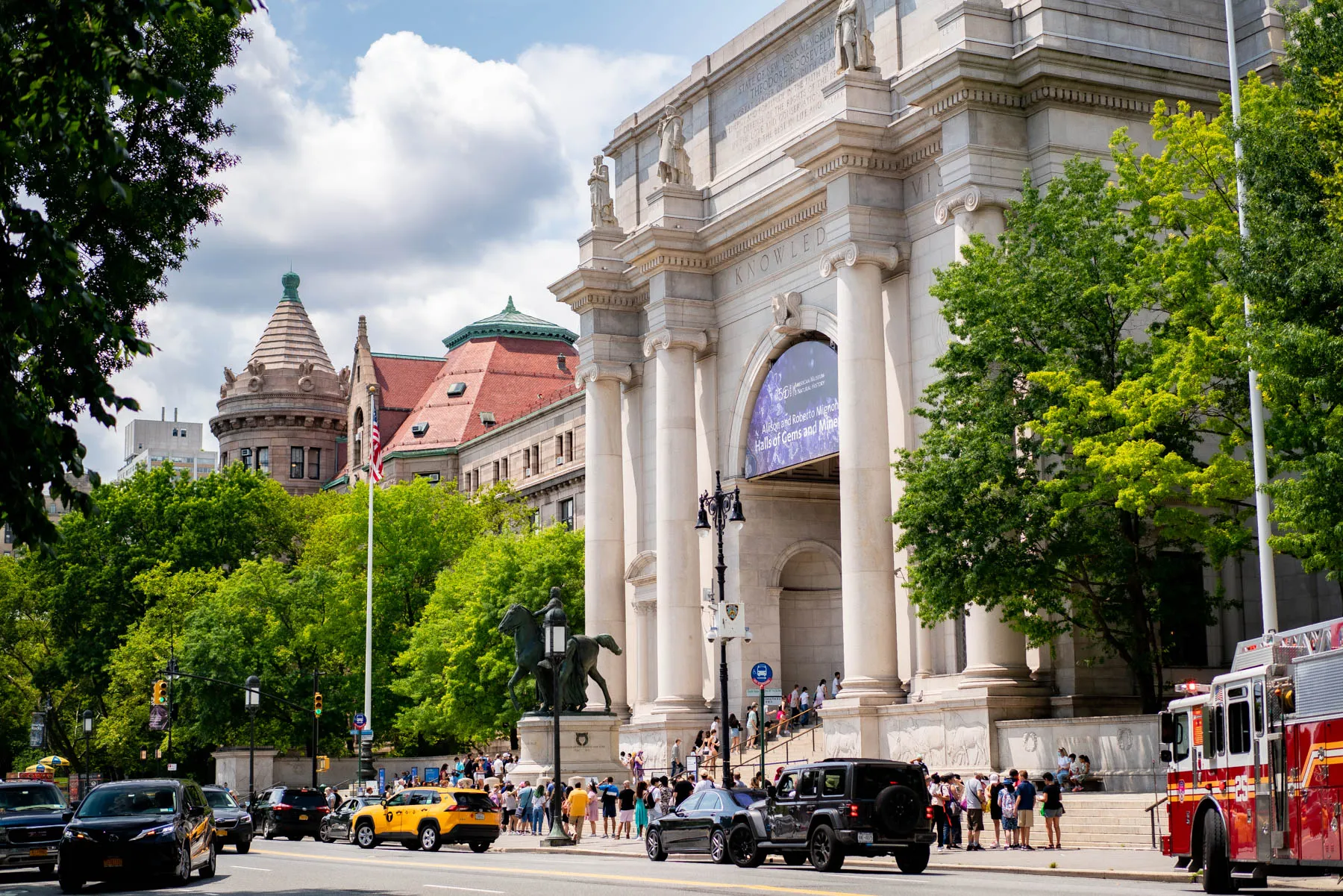
Over 33 Million Specimens & Artifacts
The museum’s collection contains over 33 million specimens and artifacts, including specimens of animals, plants, rocks, and minerals, as well as cultural artifacts from ancient and modern cultures.
The museum’s most famous exhibit is the Hall of Saurischian Dinosaurs, which features a 94-foot-long Barosaurus and a 65-foot-long Allosaurus.
The museum also hosts a variety of temporary exhibits and special events throughout the year, as well as educational programs for visitors of all ages. The AMNH is also home to research laboratories and a library, which are used by scientists, scholars and students from around the world.
With its vast collection and wide range of exhibits, the American Museum of Natural History is a must-see destination for anyone interested in natural history, science, and culture.
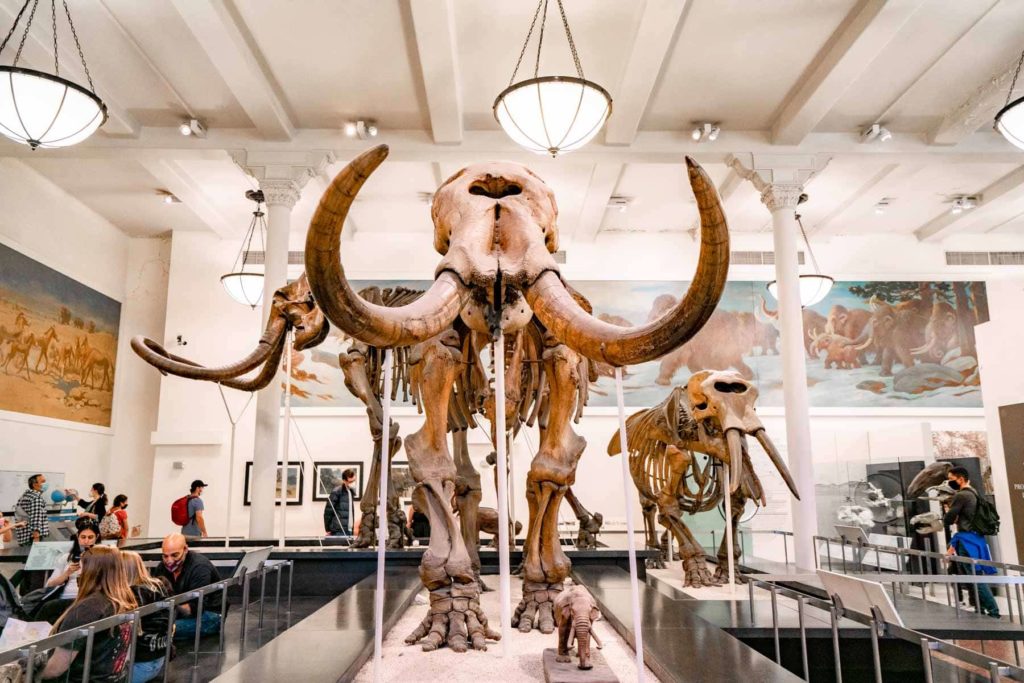
Top 5 New York Landmarks
5. Ellis Island
We’re on to the Top 5 New York Landmarks. At # 5 is one of the most iconic places in American history – Ellis Island.
Ellis Island that served as the primary immigration processing center in the United States from 1892 to 1954. It is estimated that more than 12 million immigrants passed through Ellis Island during this time.
The history of Ellis Island dates back to the mid-19th century when the federal government purchased the island from New York State to use as a military fortification. In 1890, the federal government decided to convert the island into an immigration processing center to manage the large influx of immigrants coming to the United States from Europe.
Ellis Island opened its doors on January 1, 1892, and the first immigrant to be processed was Annie Moore, a 15-year-old girl from Ireland. Over the next six decades, Ellis Island would become the busiest immigration processing center in the United States, with thousands of immigrants passing through its doors each day.

It Was A Gateway To A Better Life
Immigrants arriving at Ellis Island were subjected to a rigorous screening process to ensure they were healthy and not likely to become a burden on society. They underwent medical exams and had to answer a series of questions to determine their eligibility to enter the country. Those who failed the screening process were sent back to their home country.
Ellis Island played an important role in shaping the cultural and social fabric of the United States. It was a symbol of hope and opportunity for millions of immigrants seeking a better life in America.
The island also served as a gateway for immigrants to assimilate into American society, and many of the traditions and customs of different ethnic groups can be traced back to their arrival at Ellis Island.
Today, Ellis Island is a National Park and is home to the Ellis Island National Museum of Immigration, which tells the story of the immigrants who passed through its doors and their contributions to American society. It is an important historical landmark and a symbol of the American dream.

4. Times Square
We’re on to the final four historic sites and at #4 we have a place which is one of the most recognizable in the world. It’s Times Square located in New York City.
Times Square is a major commercial intersection and tourist destination in New York City, known for its bright lights, billboards, and bustling atmosphere.
It’s located in Midtown Manhattan, at the intersection of Broadway and Seventh Avenue, and is often referred to as “The Crossroads of the World” or “The Center of the Universe.”
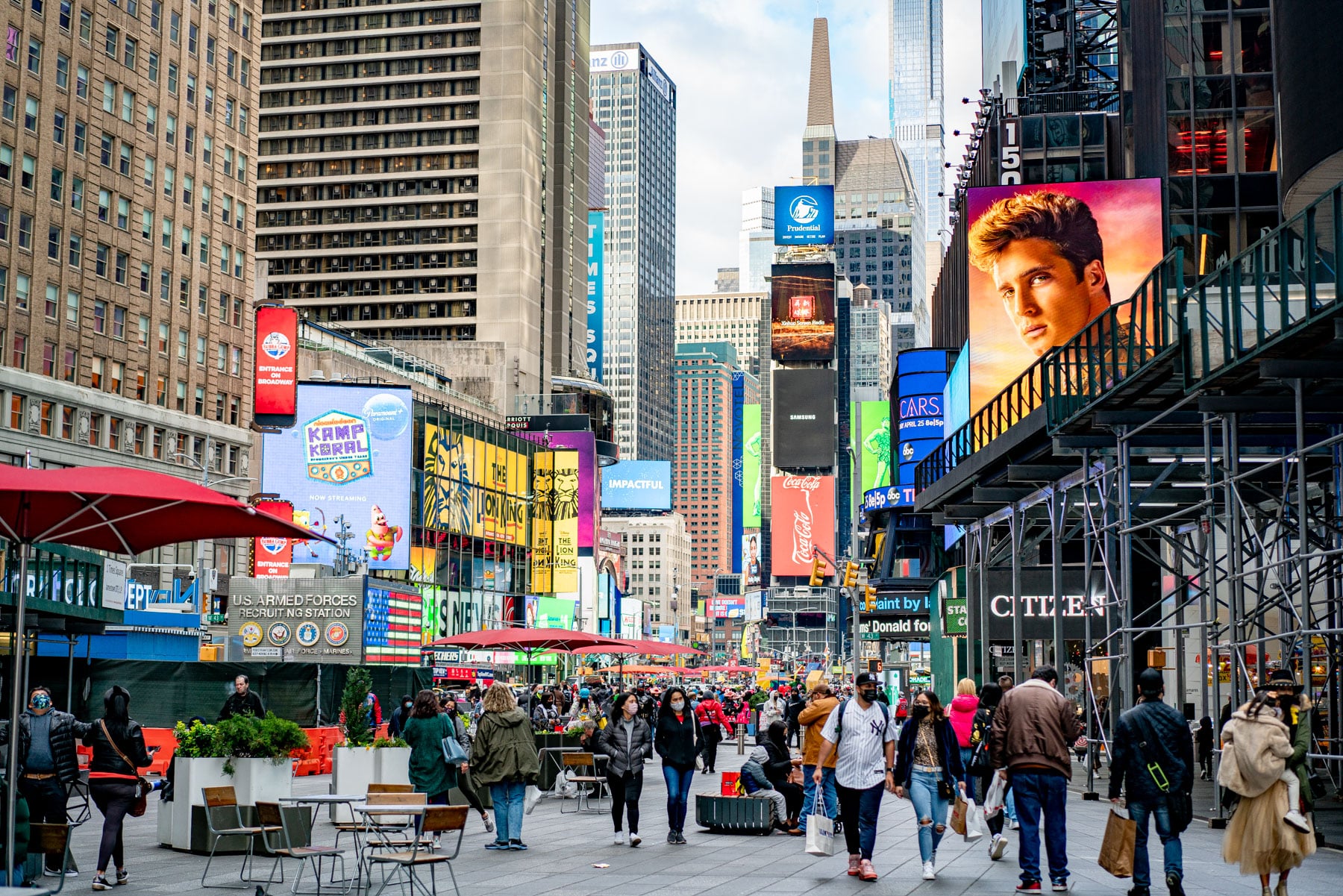
The History Of Times Square
In the late 1800s, the area was a bustling commercial district filled with theaters, hotels, and shops. It was also a transportation hub, with several horse-drawn carriage lines converging in the area. In 1904, the New York Times moved its headquarters to a new building in the area, and the square was renamed Times Square in its honor.
During the early 20th century, Times Square became the center of the city’s entertainment industry. Many of the city’s largest and most famous theaters were located in the area, including the Palace Theatre, the New Amsterdam Theatre, and the Winter Garden Theatre. The area also became known for its nightlife, with numerous bars, clubs, and restaurants opening up to cater to the crowds.
In the 1920s and 1930s, Times Square became a symbol of the city’s prosperity and glamour. The square was filled with bright lights, large billboards, and neon signs advertising everything from Broadway shows to cigarettes. The area was also home to several large department stores, including Macy’s and Saks Fifth Avenue.
In The 1980s, Times Square Was Revitalized
However, by the 1960s and 1970s, Times Square had fallen into decline. The area became known for crime, prostitution, and drug use, and many of the theaters and businesses closed down.
In the 1980s, the city government began a campaign to revitalize the area, and many of the old buildings were renovated and turned into commercial and entertainment venues.
Today, Times Square is once again a thriving commercial and entertainment center, with numerous theaters, restaurants, and shops attracting millions of visitors each year.
The square is also known for its famous New Year’s Eve celebration, where a large crystal ball is dropped from a building in the square to mark the beginning of the new year.
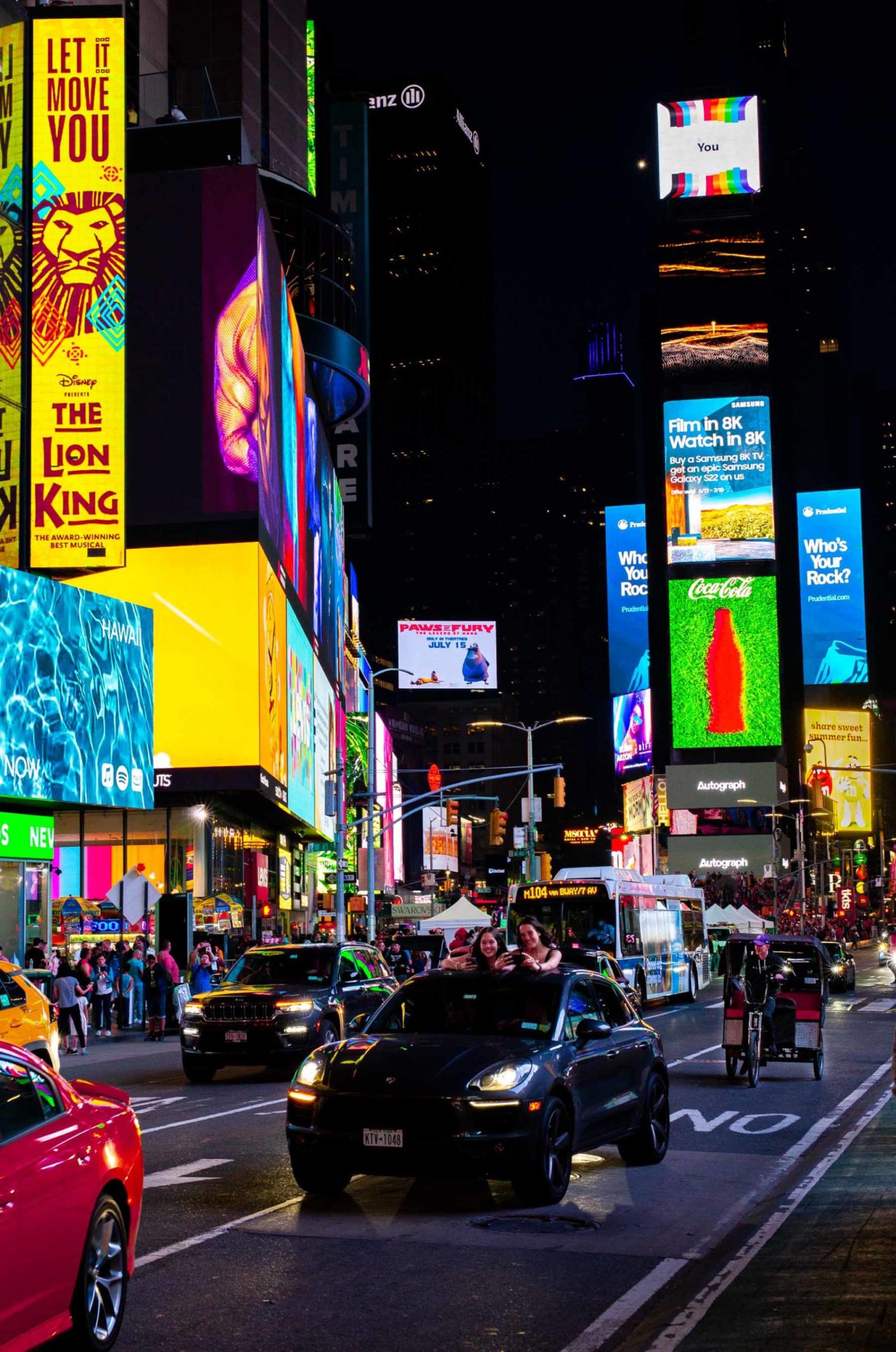
3. 911 Memorial
We’re saving the best for last as we move on to our final three landmarks. They’re all located in New York City. At #3 we have the 9/11 Memorial.
This memorial is a tribute to the victims of the terrorist attacks of September 11, 2001, and it’s located at the World Trade Center site in Lower Manhattan, New York City.
The memorial includes two large pools, each located in the footprint of the Twin Towers, which were destroyed in the attacks. The pools are surrounded by a plaza that is inscribed with the names of the victims of the attacks.
The memorial also includes a museum, located within the footprint of the original towers, that tells the story of 9/11 and its aftermath through a variety of exhibits, including artifacts, photographs, and oral histories. The museum also includes a section dedicated to the victims, which includes personal items and photographs.
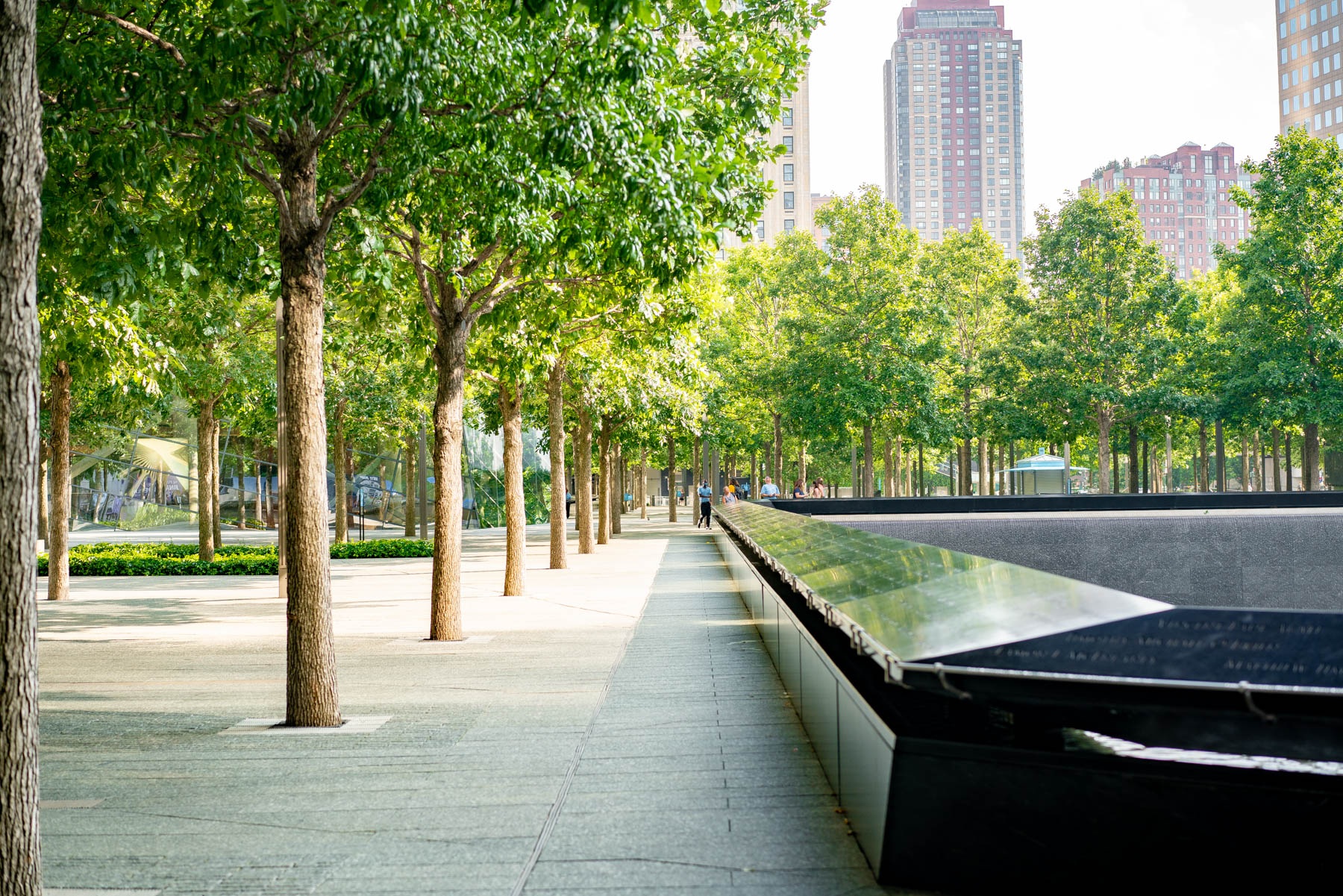
It’s A Place Of Remembrance & Reflection
The memorial is open to the public and is free to visit. It is a place of remembrance and reflection, and it serves as a powerful reminder of the tragic events of September 11, 2001, and the impact they had on the city and the world. The memorial is often busy, so it is recommended to book a reservation in advance.
The 9/11 Memorial is a sacred and emotional place, representing an important part of the history of New York City and America, and it’s a must-see for anyone visiting the city who wants to honor the memory of the victims and pay their respects to the families and friends of those who lost their lives.
Do You Remember Where You Were On That Historic Day?
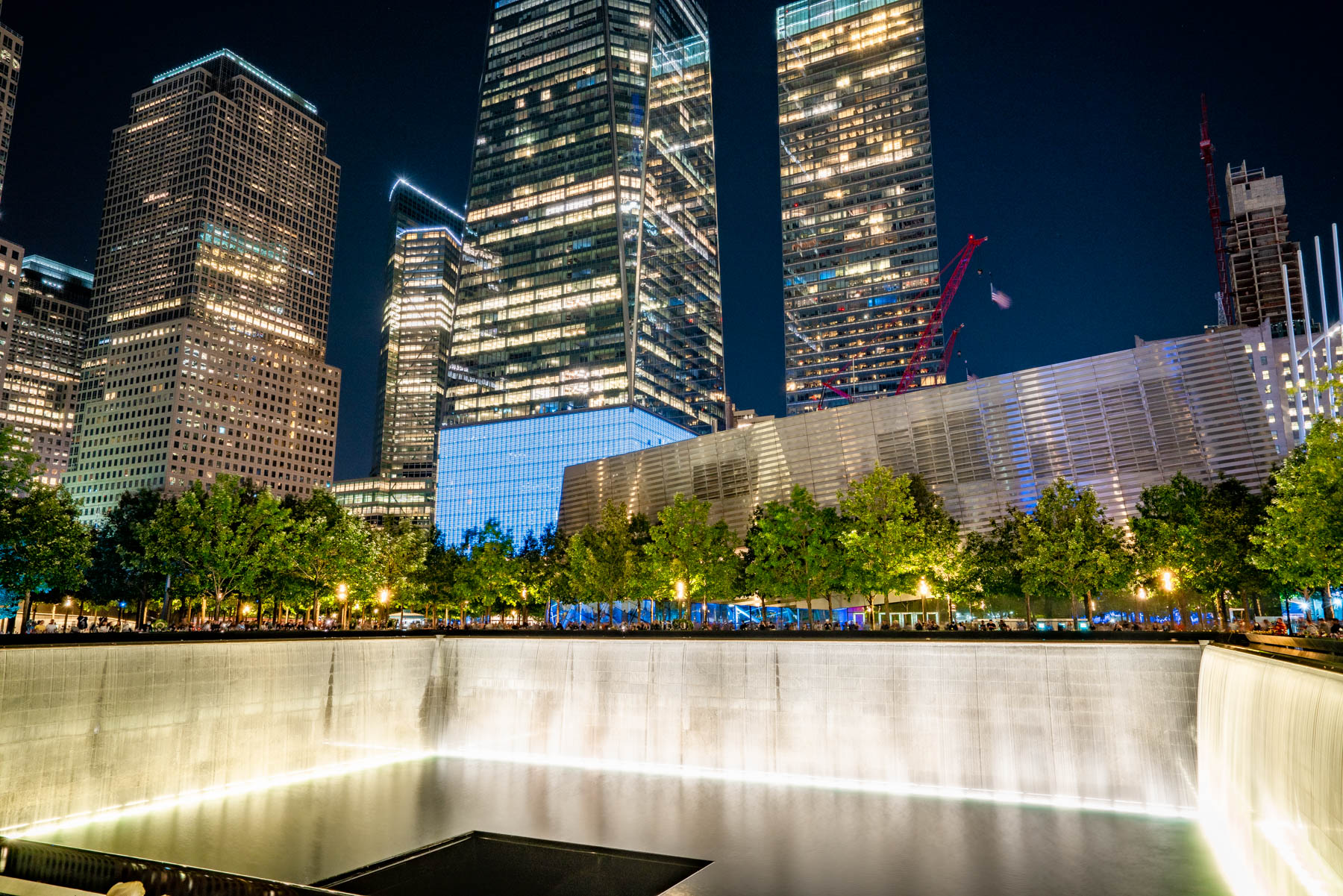
An overwhelming share of Americans who are old enough to recall the day remember where they were and what they were doing when they heard the news.
I’ve been there and I believe that every American needs to make this pilgrimage to truly appreciate and understand this memorial.
Not only the evil deeds which were committed on this day, but also the incredible acts of heroism performed by first responders as well as ordinary Americans who found themselves confronting the most dastardly attack on America since Pearl Harbor.
2. Empire State Building
We’re on to our final 2 New York Landmarks. At #2 in the runner-up spot is a testament to the power of American industry.
The Empire State was the first building in the world to have more than 100 floors, and its steel frame was considered a modern marvel. The building’s Art Deco design has inspired visitors from around the world.
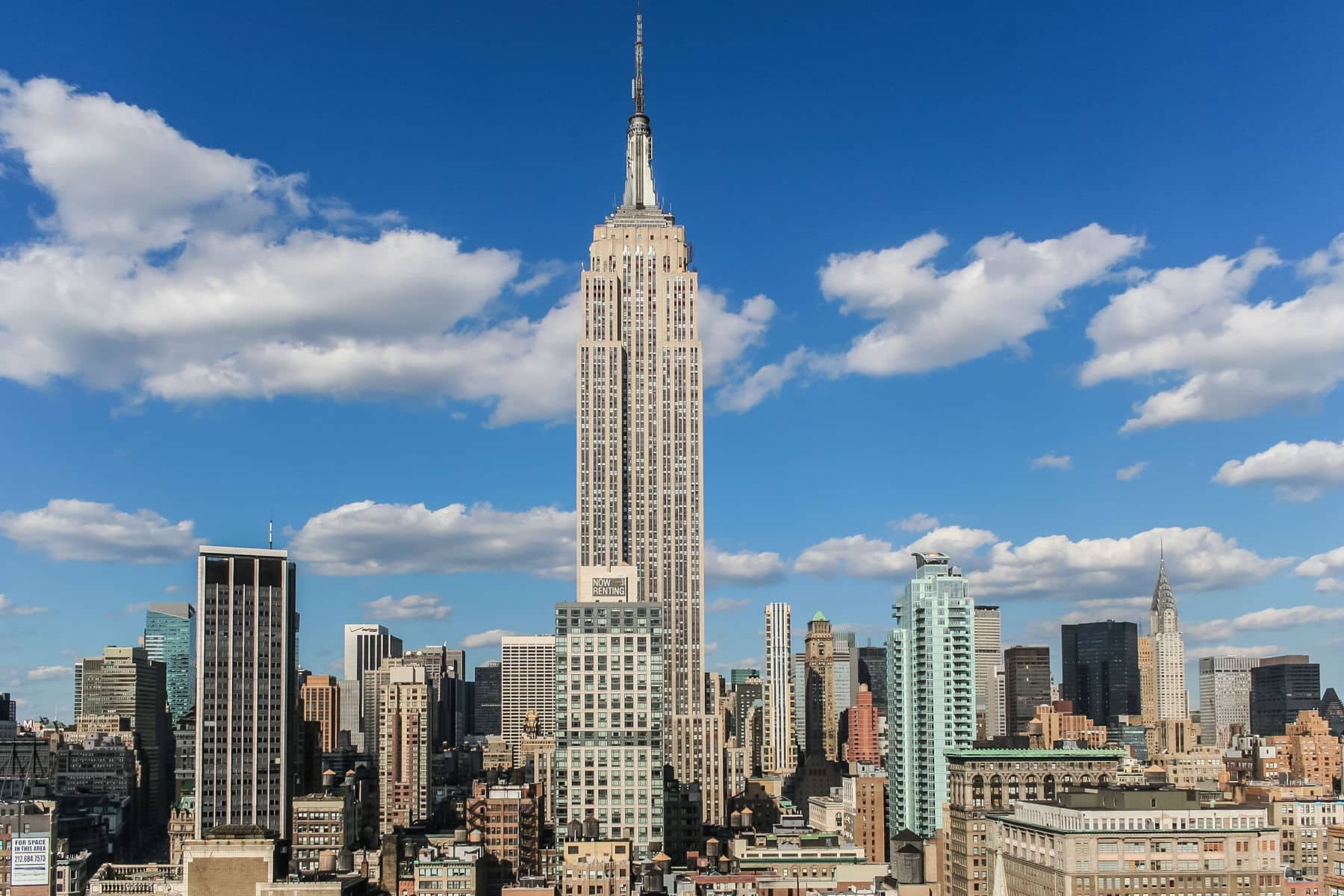
A Brief History Of The Empire State Building
- Planning and Construction: The Empire State Building was planned during the late 1920s by John J. Raskob, a businessman and former chairman of the Democratic National Committee. Raskob teamed up with architect William Lamb to design the building, which was intended to be the tallest building in the world.
- Height Competition: The Empire State Building was completed in 1931 and stood at a height of 1,250 feet (381 meters), making it the tallest building in the world at the time. The building’s height was intended to compete with the Chrysler Building, which was also under construction at the same time.
- Iconic Status: The Empire State Building quickly became an iconic symbol of New York City and a popular tourist attraction. It was featured in numerous films, including “King Kong” (1933) and “Sleepless in Seattle” (1993).
- Reinforced by Aircraft Cables: During World War II, the Empire State Building was a key location for broadcasting news and propaganda. In 1945, an Army B-25 bomber crashed into the building’s 79th floor due to poor visibility caused by heavy fog. The crash caused extensive damage, but the building remained standing. In the years that followed, the building was reinforced with aircraft cables to prevent future disasters.
- Renovations and Improvements: The Empire State Building has undergone several renovations and improvements over the years. In the 1950s and 1960s, the building’s lobby was renovated and the observation deck was expanded. In 1986, the building’s exterior was renovated and restored to its original appearance. In 2019, the building’s observation deck underwent a $165 million renovation to improve the visitor experience.
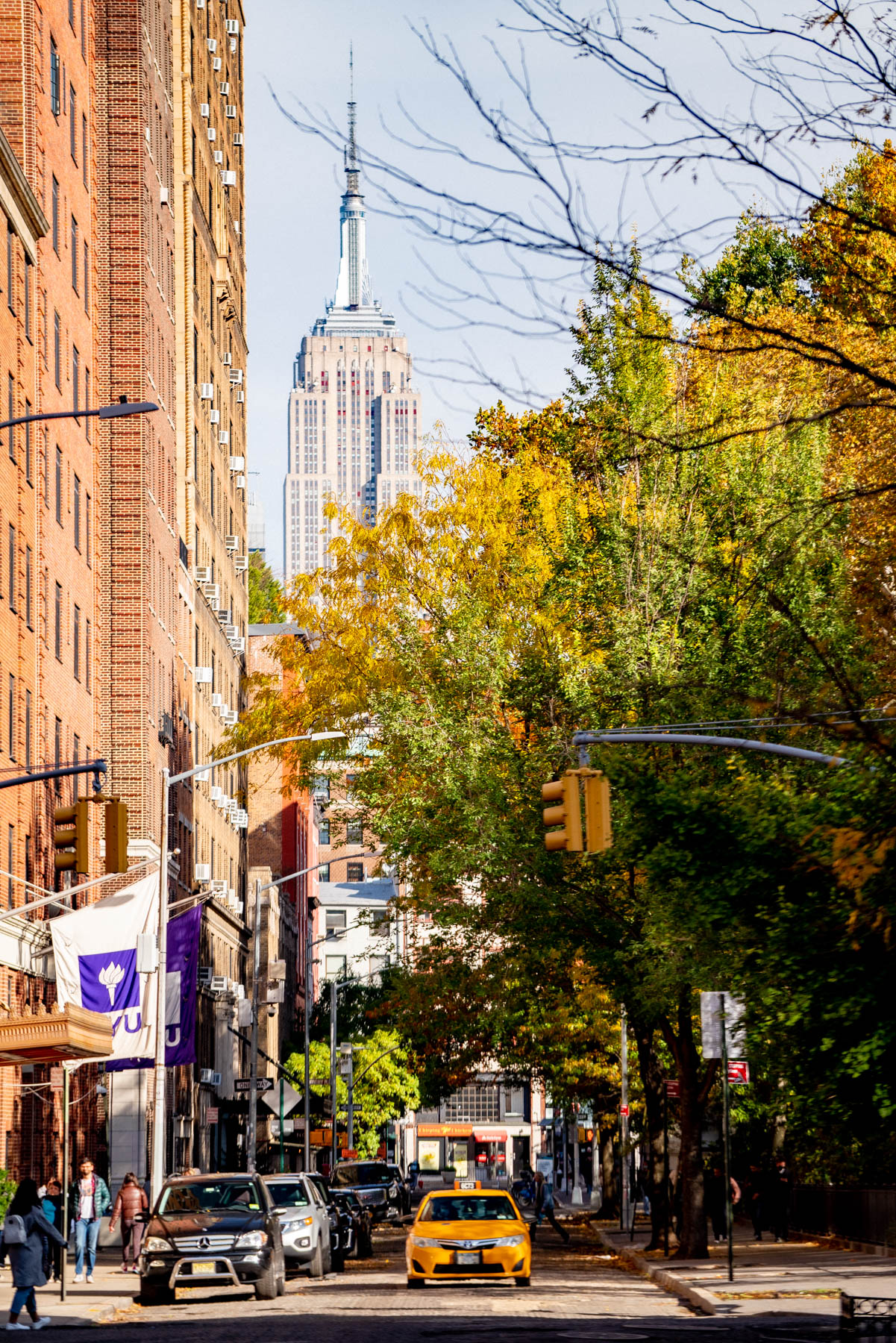
Check Out One Of The Amazing Tours
The Empire State Building offers several different tours for visitors to experience the building and its history.
The most popular tour is the “Main Observation Deck” tour, which allows visitors to take an elevator to the 86th floor observation deck to take in the 360-degree views of the city.
The “Skip the Line” tour allows visitors to bypass the main entrance lines and proceed directly to the elevators for the main observation deck.
The “Empire State Building Observatory Experience” is a self-guided audio tour that allows visitors to explore the main observation deck at their own pace.
For the more adventurous, there is the “Empire State Building: 102nd Floor Observatory” tour, which takes you to the top of the building, 102nd floor observatory, where you can see the most spectacular views of the city.
The “Empire State Building: Behind the Scenes” tour, where visitors can learn about the building’s history, architecture and engineering.
Finally, the “Empire State Building: VIP Tour” offers a private guide and priority access to the elevators and observation decks.
Please note that all tours are subject to availability and are offered at an additional cost to the general admission ticket price.
1. Statue Of Liberty National Monument
We’ve saved the best for last! As the Landmark In New York, More Than Just Parks has selected what we believe is the most iconic landmark, not only in New York, but in America. It’s the symbol of what the United States stands for.
At #1 on our list of the Best New York Landmarks we have the Statue of Liberty.
The Statue of Liberty is one of the most iconic symbols of the United States and stands as a symbol of freedom and democracy around the world. The statue is located on Liberty Island in New York Harbor and was a gift from the people of France to the people of the United States.
The idea for the statue was first proposed by a French politician and abolitionist named Édouard René de Laboulaye in 1865. He suggested that France should give a gift to the United States to commemorate the friendship between the two nations and to celebrate the abolition of slavery in the United States.
The French government agreed to the idea, and the famous sculptor Frédéric-Auguste Bartholdi was chosen to design the statue. Bartholdi modeled the statue after the Roman goddess Libertas, who was the goddess of freedom and was often depicted wearing a crown and holding a torch.
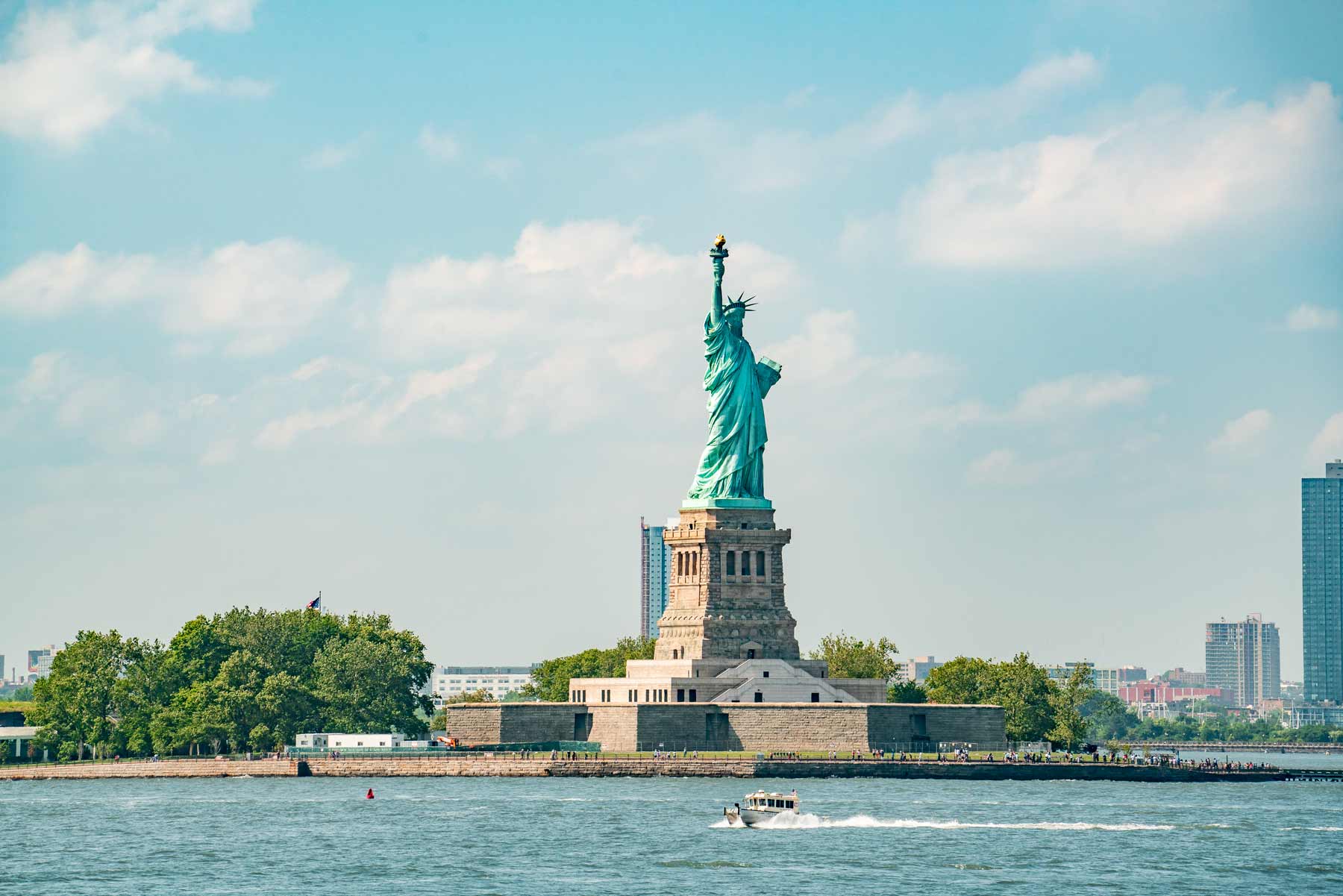
A Symbol Of Hope & Freedom
Construction on the statue began in France in 1875, and it was completed in 1884. It was then disassembled and shipped to the United States, where it was reassembled on a pedestal on Liberty Island in New York Harbor.
The statue was officially unveiled on October 28, 1886, in a ceremony attended by numerous dignitaries, including President Grover Cleveland. The statue quickly became a symbol of hope and freedom for immigrants who came to the United States seeking a better life.
Over the years, the statue has undergone several renovations and restorations to preserve its beauty and ensure that it remains a symbol of freedom and democracy for future generations. Today, the Statue of Liberty is a popular tourist attraction, with millions of visitors from around the world coming to see this iconic symbol of the United States.
See Lady Liberty Up Close & Personal
The statue was closed for renovation from 1984 to 1986 and again in 2019-2021 and is now open to the public. Visitors can take a ferry to Liberty Island to see the statue up close, and also to Ellis Island, which is where millions of immigrants passed through on their way to the United States during the late 19th and early 20th centuries.
Visitors can also take an elevator to the crown of the statue for a panoramic view of the harbor.
The Statue of Liberty is an iconic symbol of freedom and democracy and is one of the most famous landmarks in the United States. It’s a must-see for anyone visiting New York City and is a powerful reminder of the ideals of freedom and opportunity that have defined the United States since its founding.
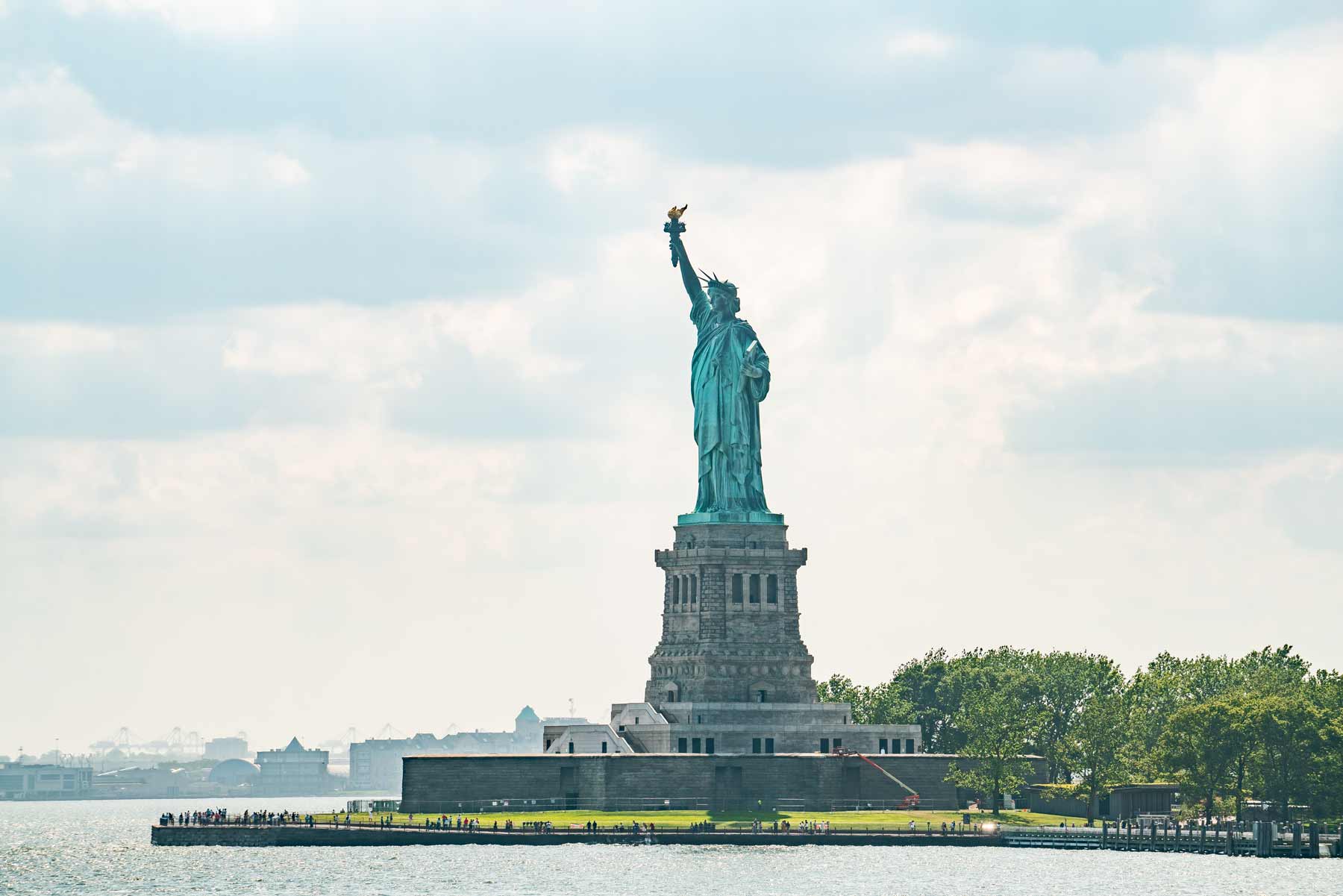
Emma Lazarus – The New Colossus
You may remember learning that wonderful Emma Lazarus poem titled, “The New Colossus.” Who could forget those stirring lines which go as follows:
“Give me your tired, your poor,
Your huddled masses yearning to breathe free,
The wretched refuse of your teeming shore.
Send these, the homeless, tempest-tost to me,
I lift my lamp beside the golden door!”
Sitting in the heart of New York Harbor lies what is arguably the most recognizable symbol in America – The Statue of Liberty.
Map Of New York Landmarks
List Of New York Landmarks
- Statue Of Liberty National Monument
- Empire State Building
- 911 Memorial
- Times Square
- Ellis Island
- American Museum Of Natural History
- Grand Central Station
- Brooklyn Bridge
- The Metropolitan Museum Of Art
- Broadway
- Fraunces Tavern
- New York Stock Exchange
- Trinity Church
- Radio City Music Hall
- Central Park
- Cooperstown
- New York Public Library
- Coney Island
- Madison Square Garden
- Niagara Falls State Park
Why Trust Us About New York Landmarks?
We’re Jim Pattiz and Will Pattiz, collectively known as the Pattiz Brothers (and sometimes as the “Parks Brothers”).
You should probably know that we don’t just make this stuff up out of thin air. We absolutely LOVE America’s public lands and have spent our entire adult lives bringing these places to life through our amazing short films.
We’ve worked with the National Park Service, the Department of Interior, USDA, U.S. Forest Service, and more for years creating films on important places and issues. Our work has been featured in leading publications all over the world and even some people outside of our immediate family call us experts on the national parks.
And, in 2018, our father – having spent a lifetime teaching history – joined us so that he could help us to tell the incredible stories behind these amazing places.
Meet The Parks Brothers
We Hope You’ll Join Our Journey

Our goal here at More Than Just Parks is to share the beauty of America’s national parks and public lands through stunning short films in an effort to get Americans and the world to see the true value in land conservation.
We hope you’ll follow our journey through the parks and help us to keep them the incredible places that they are. If you’re interested in joining the adventure then sign up below!
Related Links
What Is A National Park? To learn more about the difference between the various National Park Service designations check out our article that explains everything!
National Parks In New York City: 10 Best National Parks In New York City
National Parks In New York: 25 EPIC New York National Parks
Historic Landmarks In America: 25 Bucket List Famous Landmarks In America

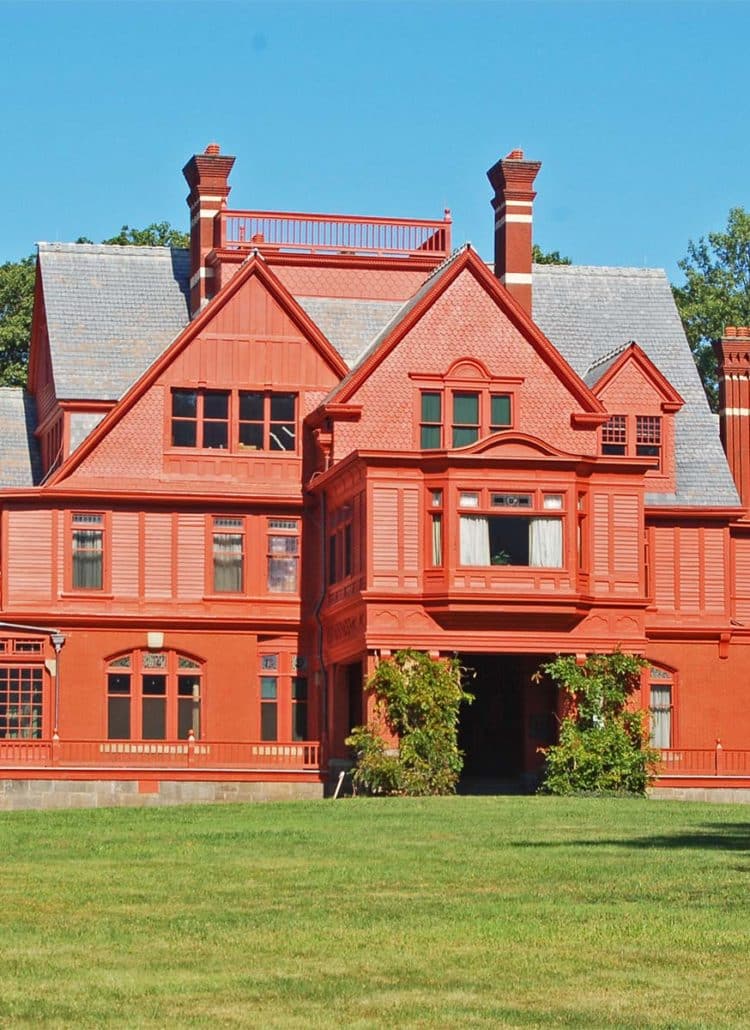
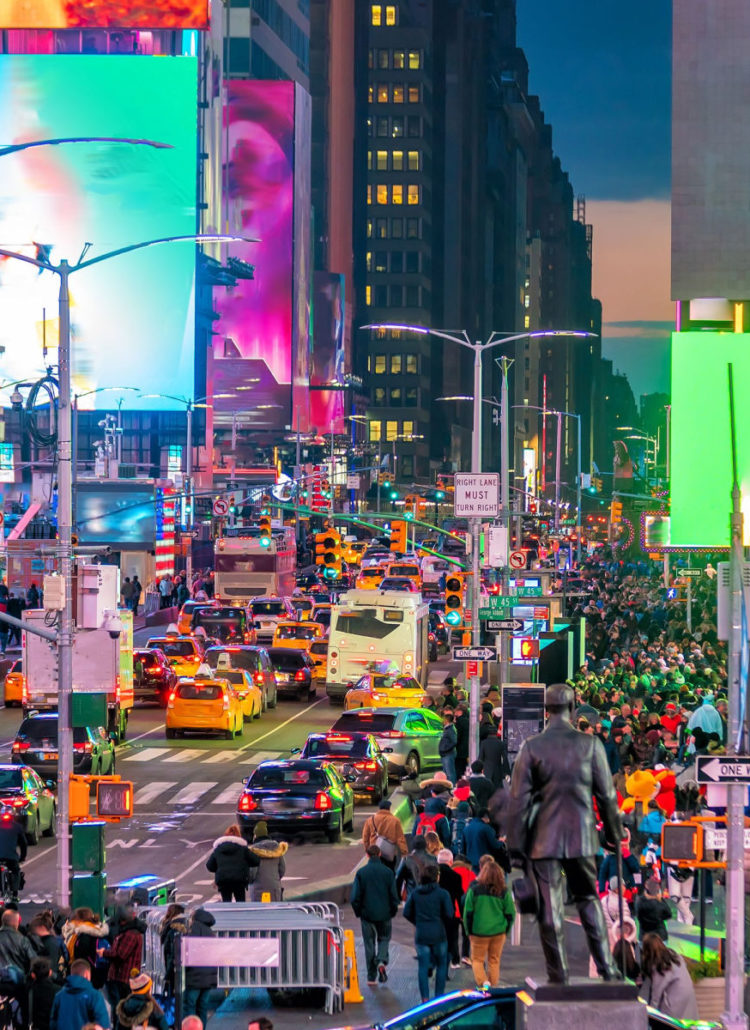
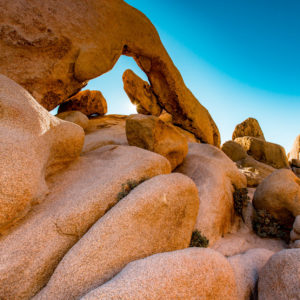

Leave a Reply